
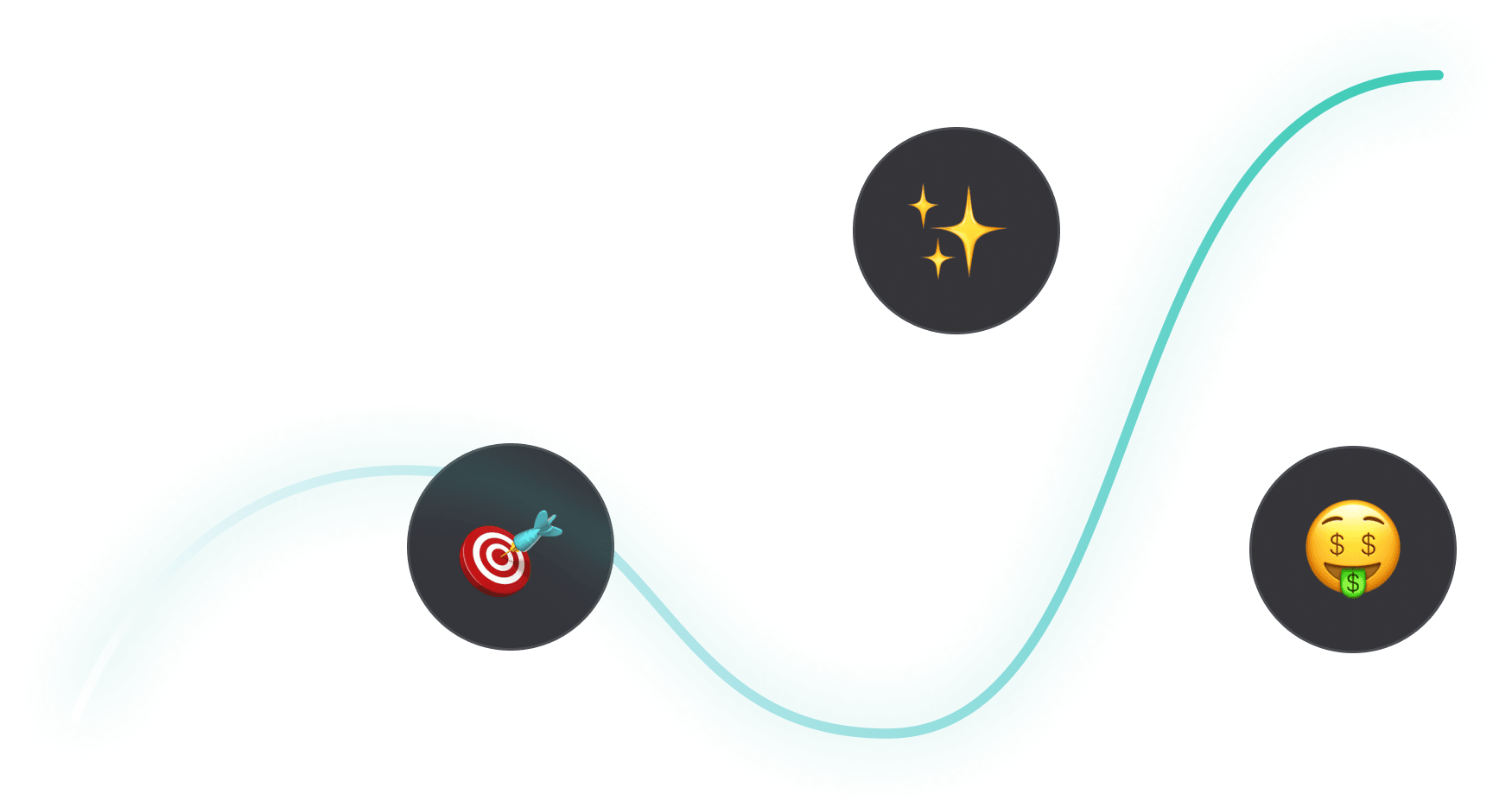
Become a B2B SaaS Ads Expert
.png)
Intro to B2B Google Ads: Crash Course For New Advertisers
Want to master Google Ads for B2B?
We’ll dissect Google Ads from a 10,000 foot view in this guide.
So you can walk away knowing:
- What is Google Ads?
- Is your ideal B2B buyer searching on Google?
- How can you get your ad seen on the top of Google?
- How much does Google Ads cost?
So whether you’re a SaaS founder, performance marketer, or in-house marketer looking to:
- Scale demo and trial requests for your new B2B SaaS startup
- Run Google ads for clients or launch campaigns internally
- Work with freelancers or agencies running your Google Ads
It all starts here with the fundamentals, so let’s dive in! 👇
TABLE OF CONTENTS
- What is Google Ads?
- Is Your Ideal B2B Buyer Searching on Google?
- How Much Does Google Ads Cost?
- How to Forecast Your Google Ads Budget
- Why is Google Ads So Powerful?
- How Can You Get Your Ad Seen on the Top of Google?
What is Google Ads?
Google Ads is an auction place.
Or as I like to think about it, a battleground.
Where you have thousands of advertisers competing against each other to show up on the top of Google when their ideal prospect searches for their products & services.
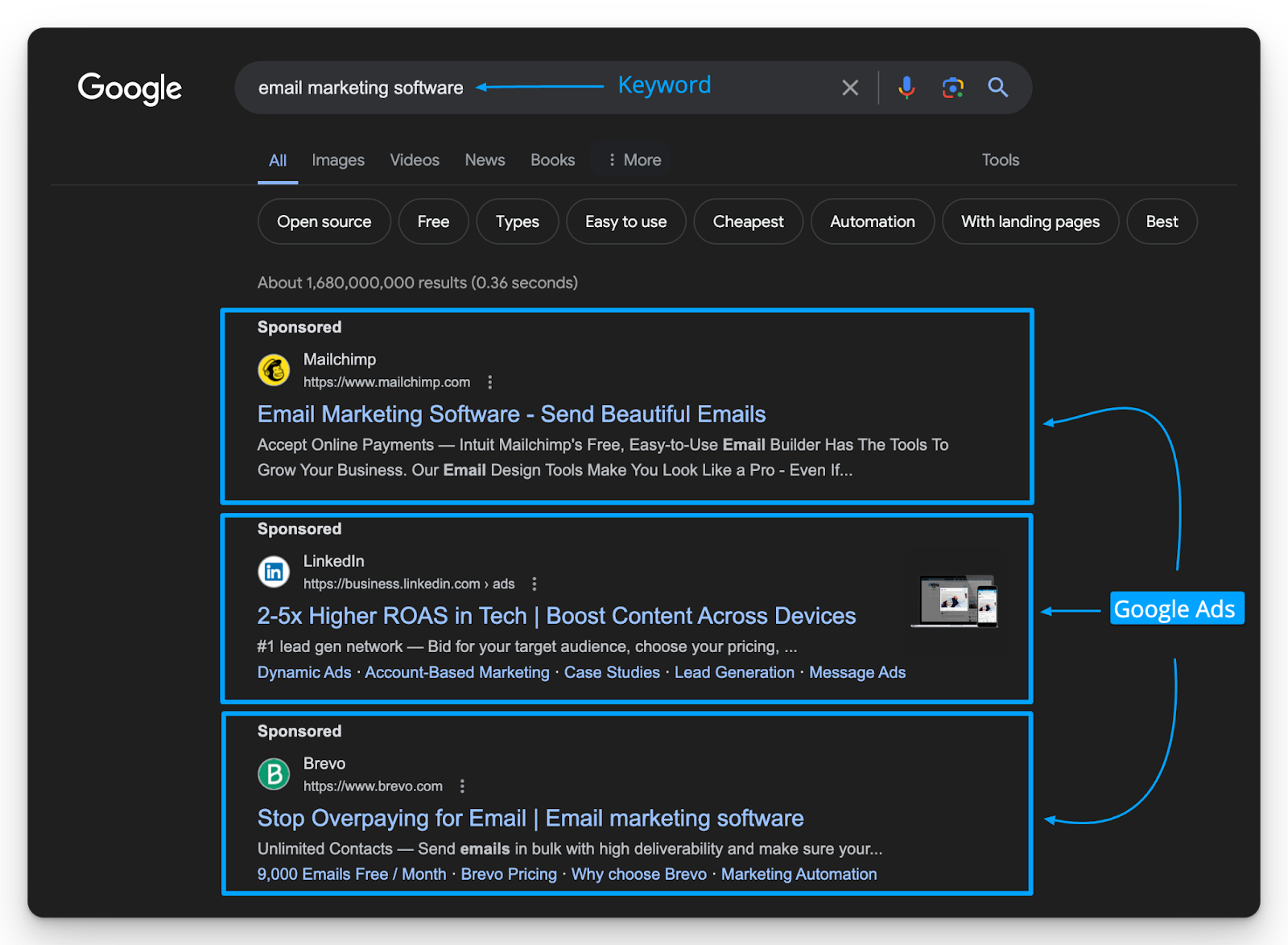
With 8.5B + searchers happening per day on Google there is a very HIGH likelihood your ideal B2B buyer is using Google to find information, and research solutions.
Is Your Ideal B2B Buyer Searching on Google?
Depending on the niche you’re in Google may or may not make sense.
You can create a free Google Ads account and leverage the Keyword Planner to validate demand.
All you need to do is research the ideal keyword your dream buyer would search and review the average monthly search volume and top of page bid estimates.
In the example below, I can see that for “email marketing software” there is:
- 1,000 - 10,000 average monthly searches
- $49.75 top of page bid estimate
If your ideal keyword has > 100 searches per month, Google can be a worthwhile return on effort.
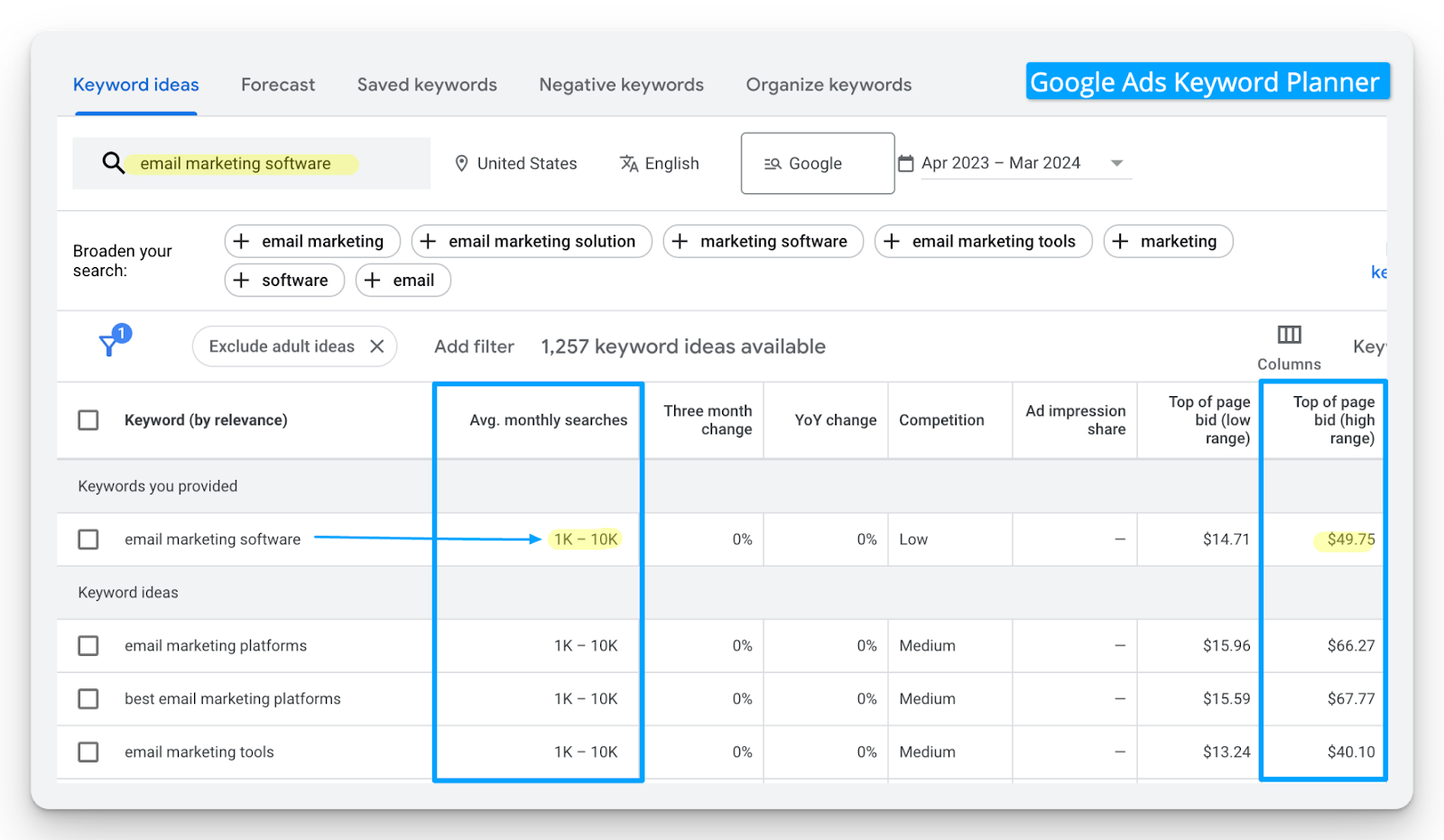
How Much Does Google Ads Cost?
Before diving into how much does Google Ads cost?
With Google Ads you’re only charged on a cost-per-click (CPC) basis.
Meaning you only pay Google if someone clicks your ad, so unlike traditional advertising you’re not being locked into a fixed contract and paying just for eyeballs (aka impressions).
So in short if someone sees your Google Ad and doesn’t click, you won’t pay.
This is what makes Google Ads so attractive, but extremely competitive.
Here’s two ways to find out how much Google Ads will cost for your ideal keywords:
1/ Review Top of Page Bid Estimates in the Google Ads Keyword Planner
As shown in the previous step you can leverage the Keyword Planner to find bid estimates.
In my experience these estimates are never 100% accurate and recommend adding 20% on top of the top of page bid estimate to be safe.
For example, with the keyword of email marketing software we have a $49.75 top of page bid estimate, adding 20% makes it $59.70 allowing us a margin of error to better set expectations.
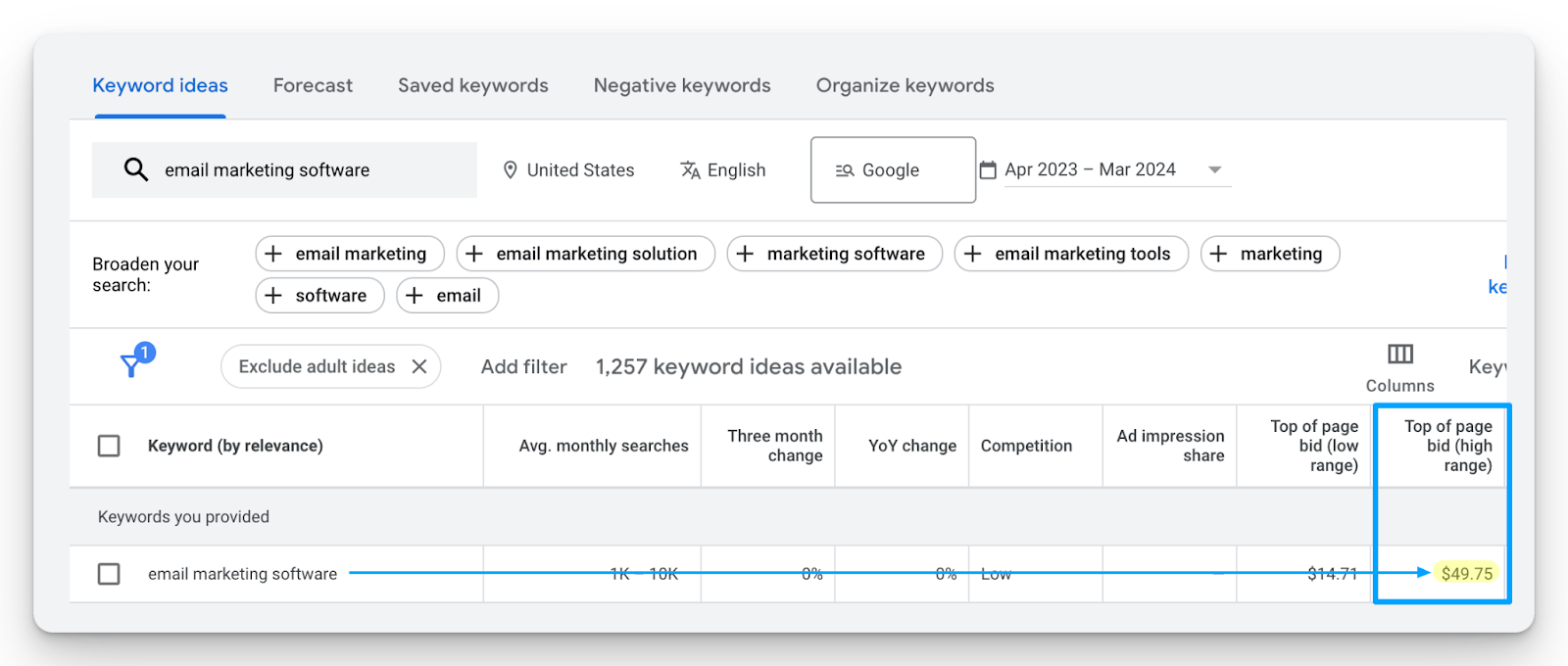
2/ Launch a Pilot Campaign for $100
Ultimately you’ll never know your real cost per click prices until launching.
If you’re seriously considering Google Ads I recommend launching a pilot campaign for $100.
The whole objective of this campaign is to understand; what is my REAL cost per click price?
Here’s a simple cheat sheet for setting up this campaign:
- Campaign Name = {Region}_{KeywordTheme}_{MatchType}
- Locations = {Your Target Country/Region/State}
- Match Type = Exact
- Bidding = Manual CPC
This setup will allow you to have the greatest control to discover your real CPC prices.
How to Forecast Your Google Ads Budget
Once you know the following:
- Your quarterly sales goal
- Average cost per click
- Opportunity win rate
- Revenue per sale
You can easily forecast a daily, monthly, and quarterly budget using our Google Ads Budget Calculator based on worst, moderate, and best case scenarios.
Give it a look, there’s a video tutorial on the page for you explaining the process.

Why is Google Ads So Powerful?
Intention Is what makes search advertising so powerful 🤝
You can reach exactly the right person, in the right place, in the right location searching for your specific product or service. At that point all you have to do is show up and not mess things up.
I always say Google Ads is a blessing and a curse; they bless you with intent, and curse you with scale.
Given your industry search volume will vary dramatically and it can become hard to scale.
The key is to win Google’s Ad Rank game to offset competitors and rising click prices.
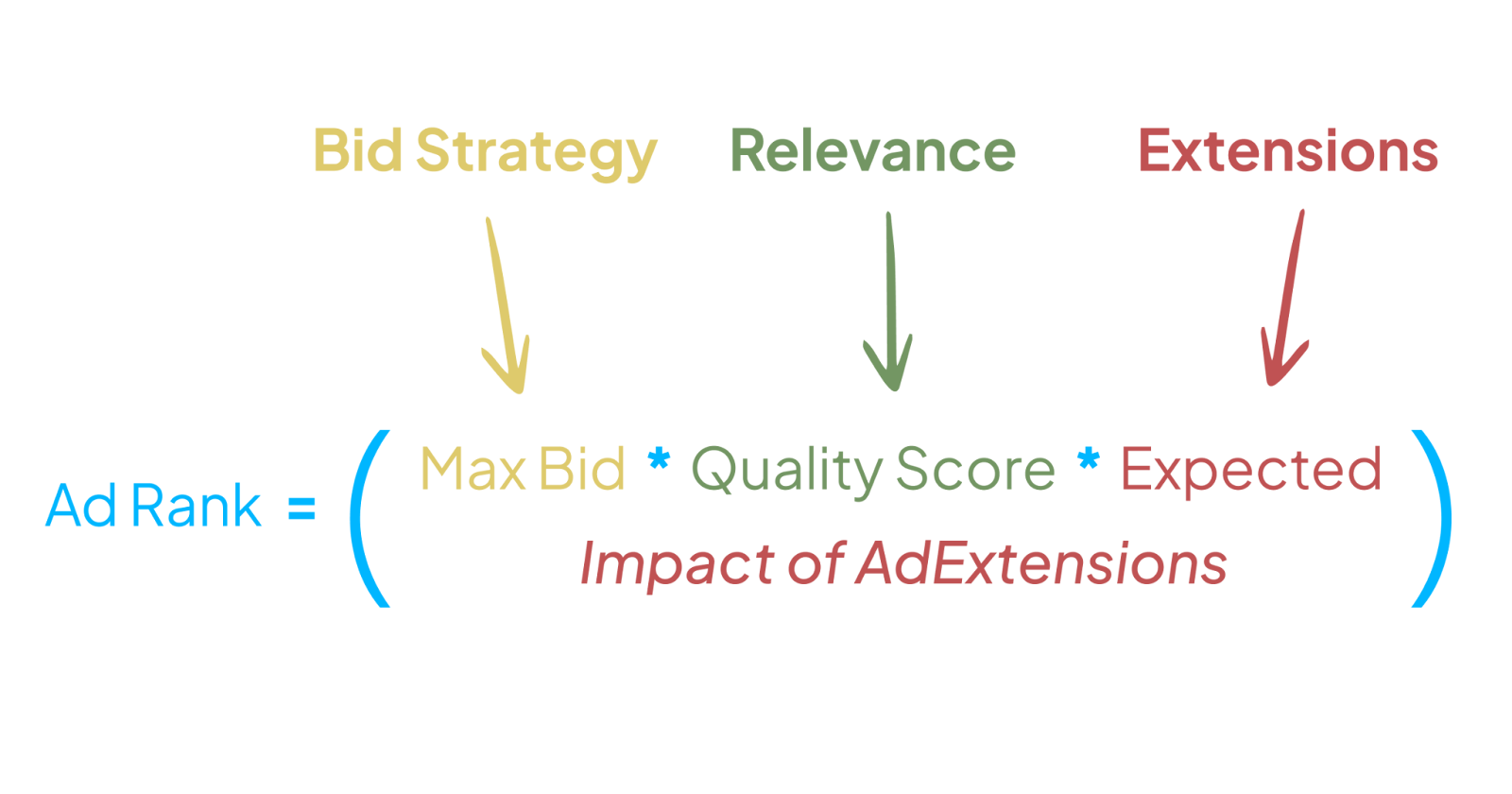
How Can You Get Your Ad Seen on the Top of Google?
Every time you search for something on Google (or other search engines such as Yahoo, Bing, and Firefox) the results page you’re directed to afterwards is the Search Engine Results Page (SERP).
I like to think of the SERP as the Battleground in which Google Ads takes place.
The SERP is Divided Between Paid and Organic Results.
The Google SERP usually has about 3-4 paid ads at the top and 3 at the bottom.

Ad Rank Determines the Position of Your Ad on the First Page
Which determines if your ad is on top of the first page of or nowhere to be seen.
Your goal is to appear in the top 3 spots as click-through rates decline with lower positions.
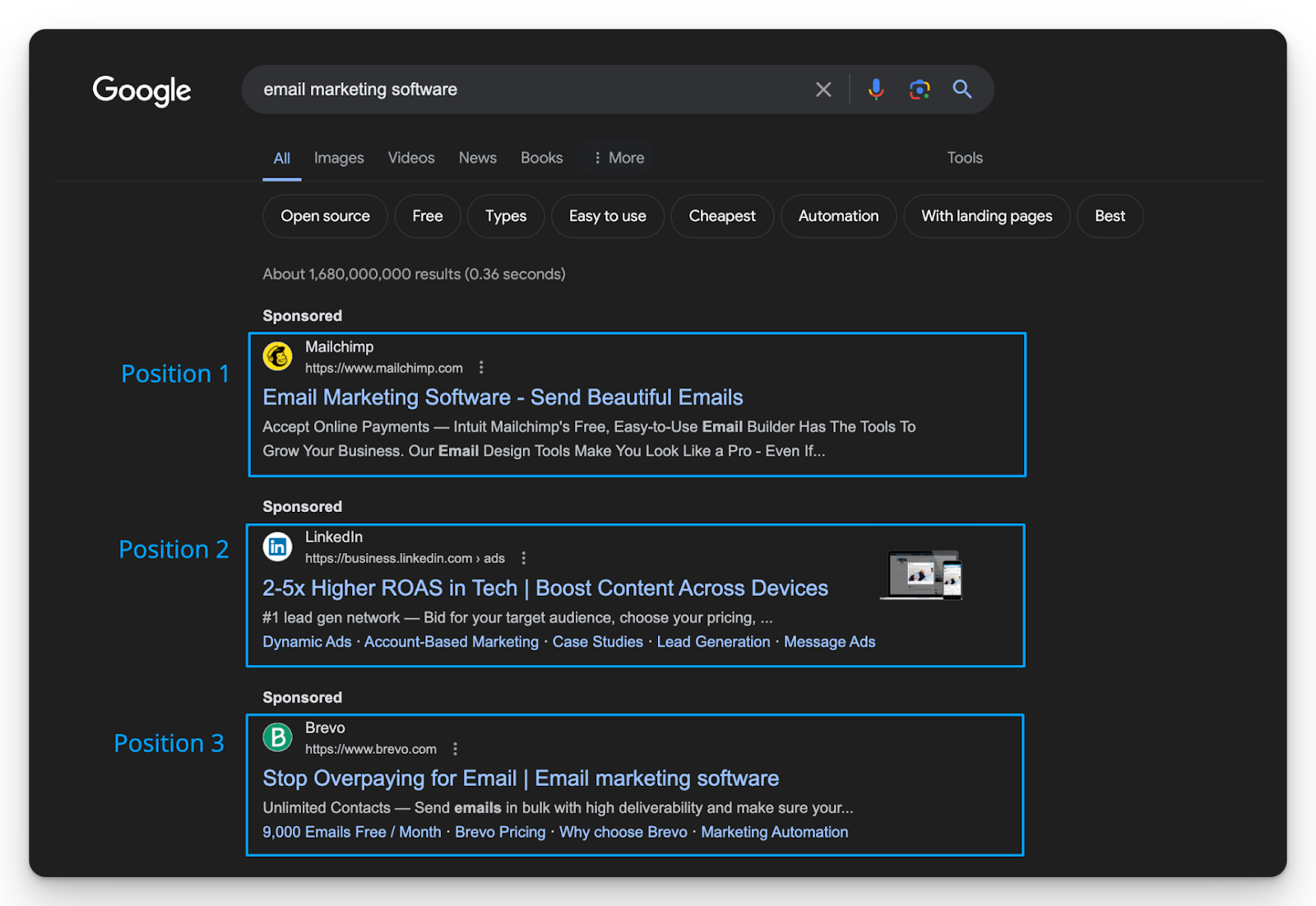
Higher Position Doesn't Always Mean Greater Cost
The remarkable thing about Google Ads is that you can be #1 on the page and pay less than your competitors who are in positions lower than you (hypothetical example below).
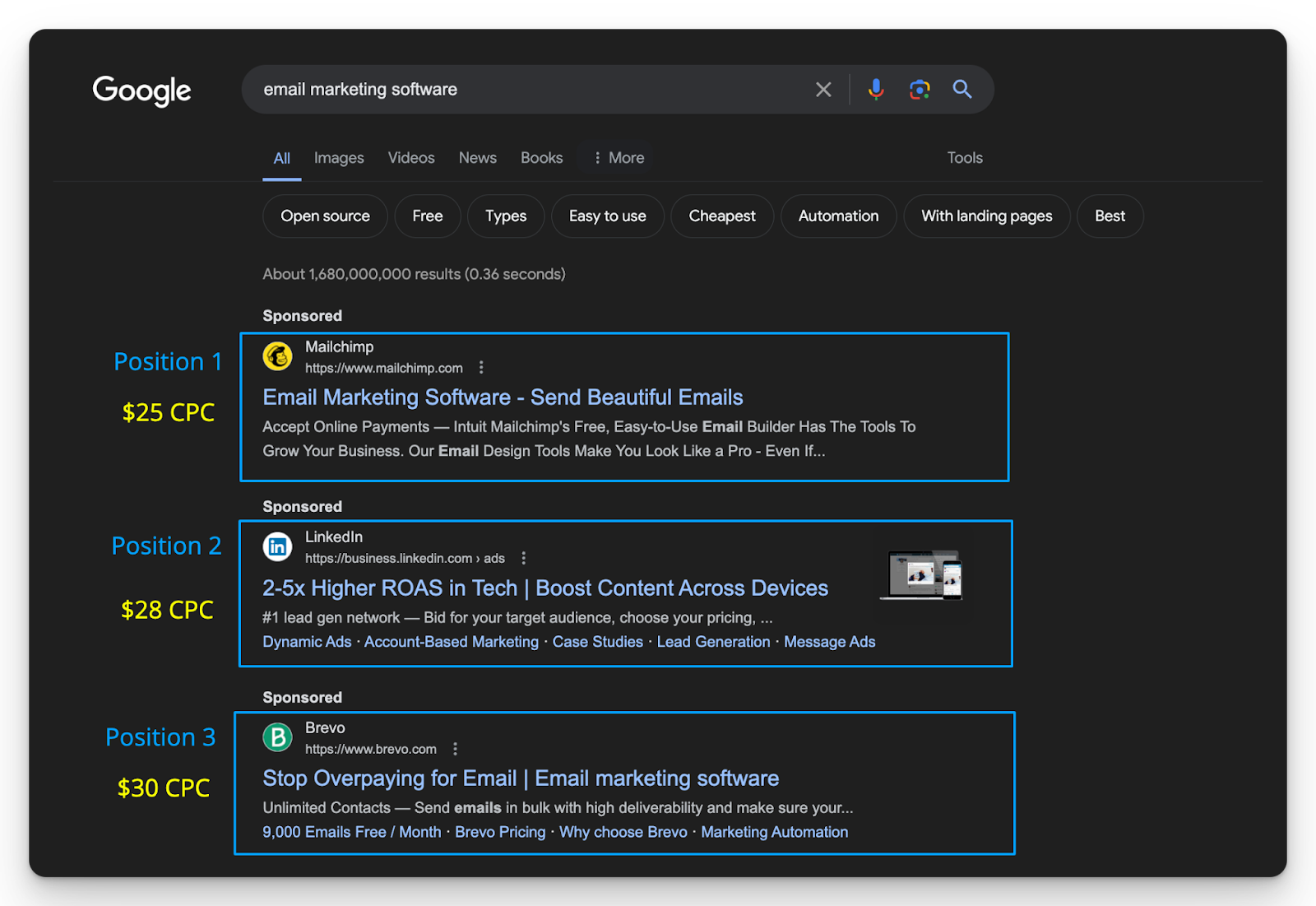
If after reading this article you believe Google Ads is worth further exploration.
Build on this fundamental understanding of Google Ads for B2B.
Hope you found this useful!
From Clicks to Conversions: Master Google Ads for B2B 🔥
If you want to become a Google Ads pro, check out our free B2B Google Ads courses, where you'll learn how to launch, optimize, and scale your campaigns to drive pipeline and revenue.

Here's what you'll learn in each course:
⚙️ B2B Google Ads 101 - How to Launch Dangerously Effective Campaigns for Beginners
- The Googleverse: The Game You're Playing & How To Win
- Measurement: How to Make Sure You're Profitable
- Targeting: How to Show Up For the Right Searcher
- Planning: Putting It All Together
🎯 Google Ads 102 - How to Clicks Into Profit
- Visibility: How To Find the Hole Sucking Profits
- Workflows: How to Optimize On a Daily, Weekly, Monthly & Quarterly Basis
- Experimentation: How to Test & Automate Profitability
- Troubleshooting: How To Solve Inevitable Problems
🚀 Google Ads 103 - How to Scale Google Ads For Advanced Advertisers
- Methodology: How to Vertically Scale Google Ads From A-Z
- Campaigns: Scaling Horizontally Through Campaign Themes
- Channels: Scaling Outside of Paid Search
Click Here to Join 1,000+ B2B Marketers Today and start leveling up your advertising skill set.
Takes < 90 seconds to sign up (seriously we timed it 😂)
People Also Ask
How can I effectively integrate Google Ads into my existing B2B marketing strategy?
Align your Google Ads campaigns with your overall marketing objectives by ensuring consistent messaging across all channels. Coordinate with sales and marketing teams to create cohesive campaigns that guide prospects through the sales funnel.
What are the best practices for managing budgets in B2B Google Ads campaigns?
Regularly monitor and adjust your budget allocation based on campaign performance. Prioritize spending on high-performing keywords and ads, and consider implementing bid strategies that align with your goals, such as target CPA or ROAS.
How can I leverage Google’s audience targeting features for B2B advertising?
Utilize features like custom intent audiences to reach users actively searching for products or services similar to yours. Combine this with demographic targeting to focus on decision-makers within your target industries.
What role does ad scheduling play in optimizing B2B Google Ads campaigns?
Implement ad scheduling (dayparting) to display your ads during times when your target audience is most active. This ensures efficient budget use and increases the likelihood of engagement during peak business hours.
How can I ensure compliance with Google’s advertising policies in B2B campaigns?
Regularly review Google’s advertising policies to ensure your ads meet all guidelines. This includes adhering to content standards, avoiding prohibited practices, and ensuring transparency in your ad copy and landing pages.

B2B vs B2C Advertising: 8 Differences & Examples You Need To Know
Hey there new B2B marketer!
Diving into the world of B2B advertising can be confusing and overwhelming.
In this article I’m going to walk you through 8 differences between B2B & B2C you need to know.
This article is part of our B2B learning track so if you’re serious about learning B2B advertising you’re in the right place!
Let’s dive into it 👏
TABLE OF CONTENTS:
- 8 Biggest Differences Between B2B and B2C
- The Cost of The Product
- How Purchase Decisions Are Made
- The Average Sales Length
- Smaller Audience Sizes
- Different Distribution Strategies
- Need to Support Multiple Sales Funnels
- Team Sport, Not Individual
- Go Further Than Just The First Conversion
8 Biggest Differences Between B2B and B2C
In no particular order of importance, here are the 8 biggest differences between business-to-business (B2B) and business-to-consumer (B2C) advertising.
The Cost of The Product
The first key difference between B2B and B2C is the cost of the product.
B2B marketers call this the average deal size or average contract value depending on what is sold.
Typically, B2B products are more expensive ranging from $1,000 to over $250,000.
How Purchase Decisions Are Made
In B2B buying, there will be more people involved in the purchase of the product compared to B2C where there is usually only one person involved.
This is often referred to as a buying committee, in B2B your job is to nurture, educate, and reach everyone in this group so they can collectively decide to purchase the product.
The Average Sales Length
There are more people involved with purchasing the B2B product or service and the product is typically a more expensive purchase, the length of time to purchase that product is typically longer.
Depending on the complexity of what is being bought, sales cycles can range from 30 days to 36 months. The higher and more complex the product or service is the longer the sales cycle typically is.
This is different from B2C because it can take me 30 seconds to buy something off an Instagram ad.
I’m not sure if that’s a good or bad thing 🤣
Smaller Audience Sizes
With B2B advertising programs, you’ll be targeting smaller audiences across ad channels.
Your audience will typically be less than 300,000 contacts with a focus on reaching the right person and company vs B2C where your audiences will typically be much broader than this since more people can purchase your product or service.
Different Distribution Strategies
Since you’ll be reaching a much more targeted audience, and you may be dealing with a specific budget – the ad channels you decide to use may look different than your B2C advertising counterparts.
It all comes down to where your audience lives and breathes, digitally.
Believe me, I’ve been behind some powerful Facebook ads for B2B. But, you may think twice about using a TV commercial during the Super Bowl as a B2B marketer (well…unless you’re Salesforce!)
But again, this will all depend on your budget and the breath of your buyers.
Need to Support Multiple Sales Funnels
In B2B, your advertising campaigns will support and fuel multiple sales funnels and processes.
The big three are product-lead, sales-lead, and a hybrid of both.
You can learn more about each revenue model in our B2B Advertising Guide.
Team Sport, Not Individual
B2B advertising requires strategic alignment across multiple teams including sales, marketing, and customer success departments to support the buyer’s journey and close deals more effectively.
Given the fact that it’s not just about reaching a specific individual but also a company.
This increases the importance and complexity of working across teams.

Go Further Than Just The First Conversion
The B2B sales processes are more complex and there's more buyers involved.
Your advertising campaigns should be designed to help impact the entire buyer journey.
Not just the first conversion like B2C advertising.

I hope you found this article helpful!
Connect with me on LinkedIn, and let’s keep the conversation going.
You can also visit my website here for more valuable content.
Jumpstart Your B2B Marketing Career
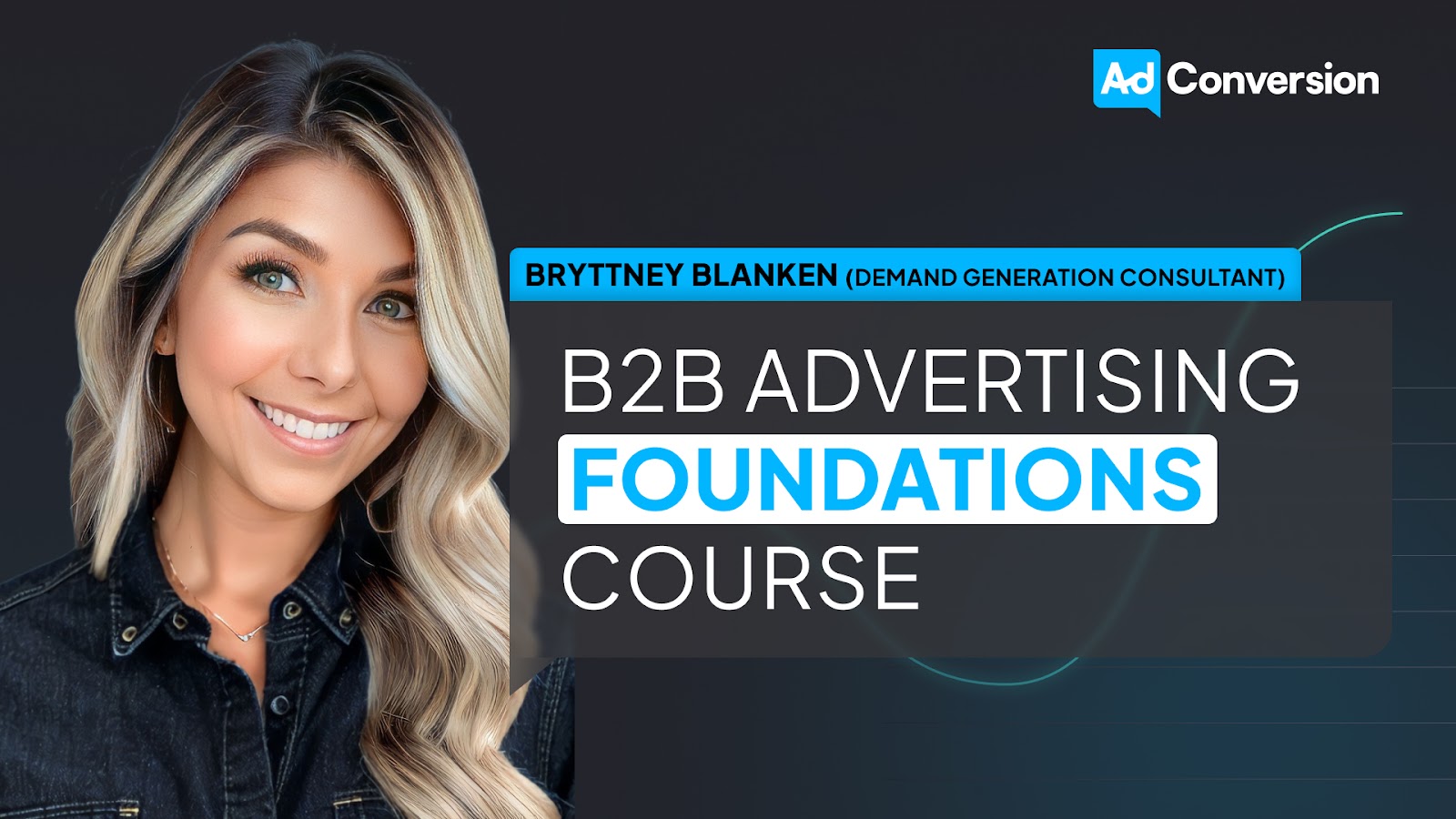
If you’re serious about mastering B2B advertising, then you definitely need to check out my free course that will teach you the foundational knowledge to becoming a high-performing B2B marketer who knows how to use advertising to drive legit business and revenue impact without the fluff or wasting your time and money learning the ropes the hard way.
- Module 1: You’ll get a crash course in the B2Bverse and master terminology, sales processes, and working across teams.
- Module 2: You’ll learn how to become your customers' psychologists and understand them deeply through buyer personas that allow you to craft effective messaging.
- Module 3: You’ll master the B2B funnel and learn how to think like a CEO to identify performance bottlenecks and convert more leads into revenue.
- Module 4: You’ll learn how to put it all together and build your go-to-market strategy that gets your ad in front of your dream buyers and converts attention.
This course was designed with absolute beginners in mind.
Accelerate your learning curve and start the course today for free.
People Also Ask
How do customer expectations differ between B2B and B2C markets?
B2B customers typically expect detailed information, personalized communication, and long-term value, focusing on how a product or service can address specific business needs. In contrast, B2C customers often seek quick solutions, emotional satisfaction, and immediate benefits, valuing convenience and brand experience.
What are the implications of these differences for customer service strategies?
In B2B markets, customer service should be consultative, offering tailored solutions and ongoing support to build strong relationships. For B2C markets, customer service should prioritize efficiency, accessibility, and positive experiences to foster customer loyalty and satisfaction.
How do pricing strategies vary between B2B and B2C businesses?
B2B pricing often involves negotiation, volume discounts, and customized quotes based on the client’s specific requirements. B2C pricing is generally fixed, with occasional promotions or discounts aimed at attracting a broad consumer base.
What role does branding play in B2B versus B2C marketing?
In B2B marketing, branding establishes credibility and trust, positioning the company as a reliable partner. In B2C marketing, branding focuses on creating an emotional connection and brand loyalty among consumers.
How do digital marketing strategies differ between B2B and B2C companies?
B2B digital marketing often leverages content marketing, LinkedIn outreach, and email campaigns targeting decision-makers. B2C digital marketing utilizes social media platforms, influencer partnerships, and broad-reaching advertising to engage consumers.
.png)
How to Craft B2B Buyer Personas For Ad Targeting
Hey there B2B marketing grasshopper 👋
In this article, we're channeling our inner Mr. Miyagi from "The Karate Kid," because we're about to master the art of creating B2B buyer personas.
Wax on, wax off style – but with less wax and more wisdom!
Let’s dive into it.
TABLE OF CONTENTS:
- What Is a B2B Buyer Persona?
- 3 Major B2B Marketing Personas
- How to Develop a B2B Buyer Persona
- The Five B2B Buyer Persona Segmentations
- B2B Buyer Persona Template
- Translating B2B Buyer Persona’s into Ad Targeting
What Is a B2B Buyer Persona?
Just like Daniel-san needed to understand his opponents in the All Valley Karate Tournament, it's important to understand your B2B buyer personas to win in the market.
It's critical because these personas are your roadmap – they guide every marketing punch and kick you make.
If you don’t do this, your marketing efforts might be as off-target as Daniel-san trying to catch a fly with chopsticks on his first try.

We're talking about misdirected resources and messaging that misses the mark, leaving your ROI down and out — so let's break it down, Karate Kid style:
What is a persona? It’s the semi-fictional characters that make up your target audience. It’s a great way to unpack who makes up your ideal customer profiles, called an “ICP”
3 Major B2B Marketing Personas
In B2B marketing there are 3 major personas or roles to understand in the sales process.
This is also referred to as a buying committee:
- Decision Maker – The person who makes the final decision to purchase
- Champion - A person who enthusiastically supports your product or service in their organization
- Influencer - A person who can influence other members of the buying committee

Your marketing and advertising efforts should address their needs and concerns when it comes to buying and using your product or service.
Knowing what these personas are looking for will help you tailor your messaging to make your ads stand out.
For example: imagine your buyer persona 'Finance-Manager-Frank'. He's in his mid-40s, loves numbers more than karate, and is always on the lookout for tools that bring efficiency and balance. Where does he find his information? → LinkedIn and financial blogs
Knowing this, you’d be able to hone in your advertising strategy to use LinkedIn ads to demonstrate how finance managers find more efficiency from their investments by using your product.
How to Develop a B2B Buyer Persona
There’s 5 major segmentation buckets to consider when putting together a B2B buyer persona:
- Demographic Segmentation
- Targeting potential customer based on their role (ex: Job Titles, Job Functions)
- Firmographic Segmentation
- Targeting potential customers based on company traits (ex: Industry, Company Size)
- Geographic Segmentation
- Targeting potential customers based on their company and physical location (ex:USA)
- Technographic Segmentation
- Targeting potential customers based on the tech they use (ex: Slack, Teams)
- Behavioral Segmentation
- Fine tune your messaging based on your potential customers Jobs To Be Done, decision-making process, and more.
Within each segmentation, there’s key information you should collect to build your personas which will ultimately inform your advertising channel strategy, targeting, and messaging.
Getting crystal clear on your buyer personas will also help you maximize your resources, build internal trust with your sales and service teams, and drive better results.
Let’s dive into the five segmentations in greater detail.
The Five B2B Buyer Persona Segmentations:
Demographic
Target potential customer based on their role
- Role: Identify the job title and role they’re in and what level in their organizations they fall (individual contributor, middle management, or in the C-suite – chief roles including CEO, CFO, CMO, etc).
- Responsibilities: Identify all the key areas they oversee and manage. Pulls who they report to.
Firmographic
Target potential customers based on company traits
- Company Industry: ex: Technology, Manufacturing
- Company Employee Size: ex: 500 - 1,000 employees
- Company Revenue Size: $1,000,000 - $10,000,000 ARR
Geographic
Target potential customers based on their company and physical location
- Company Location: ex: United States, Canada
- Employee Location: ex: United Kingdom
Technographic
Target potential customers based on the tech they use
- Tools: This breaks down the tools they use or need to do their jobs (ex: Slack, Teams)
- Company Competitors: list out any relevant competing technologies
Behavioral
Fine tune your messaging based on your potential customers Jobs To Be Done, decision-making process, and more.
- Goals: This details how their job is measured by
- Jobs to be Done/Pain Points: This elaborates on the biggest challenges they face in their role
- Decision-Making Process: This goes into detail on who they need approval from when buying a new product/service, who signs the contract, who owns the budget
- Evaluation Process: This details how this persona typically decides on a product
- Objections & Concerns: this outlines what prevents them from making a decision
- Consumption Habits: how do they gain information for their job and what social media networks do they use
B2B Buyer Persona Template
To help you put this into action get a free copy of my B2B Buyer Persona template in Module 2 - Lesson 2 of my B2B Advertising Foundations Course when you sign up for free. With this template you will be able to easily map out your buyer persona across the five segmentations.

Translating B2B Buyer Persona’s into Ad Targeting
After completing the B2B Buyer Persona template you should be very clear on who you’re going after.
Now you’ll want to review your persona’s segmentation and find possible targeting opportunities in the platforms you’re considering advertising on – your options will vary greatly by channel.
Create a draft campaign in your ad platform of choice and review all of the audience targeting options available – sometimes you’ll need to get creative! (example below of LinkedIn Ads).

And that my advertising friends is your way to craft a buyer persona you can use to identify the audiences you’ll be targeting in your B2B advertising.
Hope you found this article useful!
Connect with me on LinkedIn, and let’s keep the conversation going.
You can also visit my website here for more valuable content.
Jumpstart Your B2B Marketing Career

If you’re serious about mastering B2B advertising, then you definitely need to check out my free course that will teach you the foundational knowledge to becoming a high-performing B2B marketer who knows how to use advertising to drive legit business and revenue impact without the fluff or wasting your time and money learning the ropes the hard way.
- Module 1: You’ll get a crash course in the B2Bverse and master terminology, sales processes, and working across teams.
- Module 2: You’ll learn how to become your customers' psychologists and understand them deeply through buyer personas that allow you to craft effective messaging.
- Module 3: You’ll master the B2B funnel and learn how to think like a CEO to identify performance bottlenecks and convert more leads into revenue.
- Module 4: You’ll learn how to put it all together and build your go-to-market strategy that gets your ad in front of your dream buyers and converts attention.
This course was designed with absolute beginners in mind.
Accelerate your learning curve and start the course today for free.
People Also Ask
How can I ensure my B2B buyer personas remain accurate and relevant over time?
Regularly update your personas by conducting periodic market research and gathering feedback from sales and customer service teams. This ensures they reflect current market conditions and evolving customer needs.
What are effective methods for validating the assumptions made during persona development?
Validate assumptions by analyzing customer data, conducting interviews, and implementing surveys. Cross-referencing these insights with your personas helps confirm their accuracy.
How can I align my sales and marketing teams using B2B buyer personas?
Facilitate workshops and regular meetings to discuss and refine personas, ensuring both teams have a shared understanding of target customers. This alignment fosters cohesive strategies and messaging.
What role do negative personas play in refining marketing strategies?
Negative personas represent segments that are unlikely to convert. Identifying them helps in excluding these groups from marketing efforts, thereby improving resource allocation and campaign efficiency.
How can I leverage B2B buyer personas to enhance content marketing efforts?
Use personas to tailor content that addresses specific pain points and interests of each segment, thereby increasing engagement and conversion rates.

5 Unconventional Ways to Use The LinkedIn Ads Library
Most marketers know the LinkedIn Ads library exists.
And the basics of how to use it (ex: search a competitor and voila you’ll see their ads 🪄)
You’re going to go beyond the basics in this article and learn.
5 unconventional ways experts use the library to uncover insights and inspiration.
Let’s dive into it 👇
TABLE OF CONTENTS
- Unconventional Way #1: Finding Conversation Ads Copy
- Unconventional Way #2: Identifying Localization Campaigns
- Unconventional Way #3: Studying Competitive Offers
- Unconventional Way #4: Creative Concept Discovery
- Unconventional Way #5: Landing Page Tear Downs
Unconventional Way #1: Finding Conversation Ads Copy
When you open up the LinkedIn Ads Library you can search %FIRSTNAME% to see conversation ad copy examples from competitors and relevant brands.
Here’s how to find conversation ad copy examples step-by-step:
- Open up the LinkedIn Ads Library and search for a relevant competitor or brand.

- Enter %FIRSTNAME% under search by keyword and select your relevant country and date range filters.

- From here you can browse all available variations based on your filters 🎉

If you don’t see any conversation ad messages you’ll likely need to adjust your filters or it’s possible your competitors or the relevant brands you’re researching aren’t actively testing this ad format.
Unconventional Way #2: Identifying Localization Campaigns
Localization campaigns are when you advertise outside your primary language and draft ads, and landing pages relevant to a specific language.
We’ve seen advertising outside of the English language a reduction in costs by up to 70%.
If you have the potential to advertise outside of English it’s definitely worth testing.
Here’s how to identify localization campaigns with the ad library:
- Open up the LinkedIn Ads Library and search for a relevant competitor or brand.

- Filter by all countries and uncheck your current target locations (ex: United States)

- Browse through the results to identify different localization campaigns (look for ad copy that isn’t in your primary language, example below is an ad in German).

- Click view details on the ad to identify the targeted locations.

Write down any interesting target countries and/or languages your competitors are targeting that you might consider reaching with localization campaigns.
Unconventional Way #3: Studying Competitive Offers
Let’s say you’re a B2B SaaS company looking to drive more demo requests.
You can use the LinkedIn ad library to easily see ads from competitors or relevant brands that are also trying to drive more demo requests.
The same is true if we’re talking about free trials, webinar registrations, ebook downloads, and anything else you can think of.
Here’s how to study competitive offers with the ad library:
- Open up the LinkedIn Ads Library and search your offer in the search by keyword filter.

- From here you can browse various ad types that mention your offer within the ad copy.

- You can repeat this process and narrow down your filters for further granularity.

Unconventional Way #4: Creative Concept Discovery
Most advertisers using the library will just look at the ad examples provided and not dig much further.
Instead what you should do is look for patterns around creative concepts to understand your competitors creative strategy (or the relevant brand in question).
Creative concept = the format of which the creatives are designed off
Here’s 10 examples of creative concepts:
- Before & After
- UGC
- Meme
- Product Mockup
- Illustration (Drawings)
- Stats & Research
- Comedy Skit
- Animated
- Behind-the-Scenes
- AI Generated
Using the library take note of any patterns of creative concepts your competitor/brand in question might be repeating. If it’s significant you might want to consider testing a similar concept.
Use your best judgement when labelling concepts and look for patterns.

Unconventional Way #5: Landing Page Tear Downs
When viewing ads in the library you can click on the CTA button to open up the associated landing page the ad is driving traffic towards.
The original UTMs are also still within the URL parameter so you can reverse engineer these to better understand your competitors ad strategy (learn how here).
With this valuable information you can tear down each page for inspiration.

Hope you found this article useful!
See you in the next article or one of our free courses!
Master B2B LinkedIn Ads with these 3 Free Courses:
If you want to become a LinkedIn Ads pro, check out our free B2B LinkedIn Ads courses, where you'll learn how to launch, optimize, and scale your campaigns to drive pipeline and revenue.
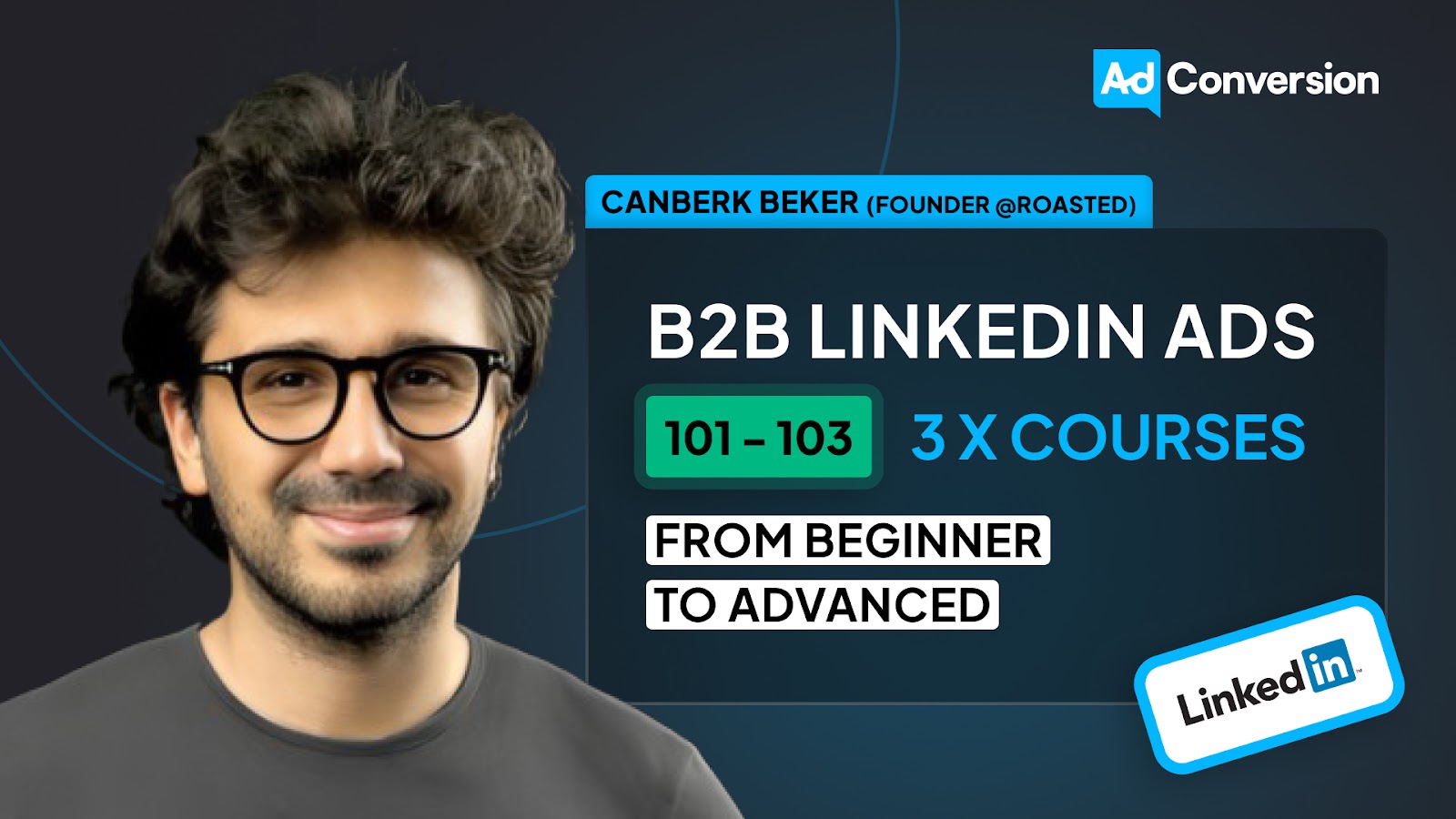
Here's what you'll learn in each course:
⚙️ B2B LinkedIn Ads 101 - The Ultimate Crash Course for New LinkedIn Advertisers
- Foundations For LinkedIn Ads Success
- Measurement: Tracking & Key Principles
- Targeting: Reaching Your Dream Buyers
- Ads: Mastering The 9 Ad Formats
🎯 B2B LinkedIn Ads 102 - The Blueprint for LinkedIn Ads Optimization
- Monitoring: How To Spot Performance Trends
- Auditing: How To Find The Darlings You Need To Kill
- Reporting: How To Transform Data Into Insights
- Optimization: How To Make Your LinkedIn Ads Profitable
🚀 B2B LinkedIn Ads 103 - Advanced Scaling Strategies From $25M In Ad Spend
- Concepts of Scaling
- Divide and Conquer
- Learnings From $25M+ In LinkedIn Ad Spend
Click Here to Join 1,000+ B2B Marketers Today and start leveling up your advertising skill set.
Takes < 90 seconds to sign up (seriously we timed it 😂)
People Also Ask
What is the LinkedIn Ads Library, and how does it work?
The LinkedIn Ads Library is a tool that lets users explore active and past ads from brands. It helps analyze competitor strategies, ad creatives, and targeting methods, offering inspiration and benchmarking opportunities.
How can I use the LinkedIn Ads Library to improve my ad campaigns?
The library helps identify trends, successful ad formats, and messaging styles. Use it to refine your own strategies by studying competitors’ offers, creative approaches, and audience engagement tactics.
Are there limitations to the insights I can gather from the LinkedIn Ads Library?
Yes, while it provides access to ad creatives and some targeting details, it doesn’t reveal performance metrics like click-through rates or conversions. It’s best used for inspiration and competitor research.
Can I track changes in competitors’ ad strategies over time using the LinkedIn Ads Library?
Yes, by regularly checking competitors’ ads, you can observe shifts in their messaging, offers, and formats, helping you adapt your campaigns to stay competitive.
How does the LinkedIn Ads Library compare to other ad libraries, like Meta or Google’s?
LinkedIn’s library focuses on professional audiences, showcasing ads tailored for B2B and career-focused messaging. Meta’s library offers broader consumer insights, while Google’s is keyword-centric. Choose based on your campaign goals.
.png)
LinkedIn Spotlight Ads In 2024: Are They Worth The Investment?
Should you invest in LinkedIn Spotlight Ads?
In this article you'll learn:
- The pro's and con's of LinkedIn Spotlight Ads
- How much LinkedIn Spotlight ads cost
- Examples of LinkedIn Spotlight ads
- 3 LinkedIn Spotlight ad strategies
By the end of this article you’ll know if this ad type makes sense for you.
Let’s dive into it! 👇
Contents
- What are LinkedIn Spotlight Ads?
- LinkedIn Spotlight Ad Specs
- 4 Reasons to Invest In LinkedIn Spotlight Ads
- 4 Reasons You SHOULD NOT Invest In LinkedIn Spotlight Ads
- 3 LinkedIn Spotlight Ad Strategies Worth Testing
What are LinkedIn Spotlight Ads?
Spotlight ads are only seen on desktop devices and use a combination of your audience's LinkedIn profile data such as photo, company name, and job title to dynamically change based on the user.

LinkedIn Spotlight Ad Specs
When creating a spotlight ad you’ve got the following options:
- Ad headline = 50 characters
- Company name = 25 characters
- Company Image = logo or image in JPG or PNG that is < 2 MB
- Background Image (optional) = 300x250 in JPG or PNG
I’d personally recommend not adding a background image as it removes the ad description, and the users profile photo will not be shown, which defeats the purpose of this ad type 😅
4 Reasons to Invest In LinkedIn Spotlight Ads
Reason 1: 74% Lower Cost Per 1,000 Impressions (CPM)
After reviewing $1,726,264.56 in spend by ad type for our B2B SaaS clients, we found linkedin spotlight ads have an average CPM of $5.23, 74% lower than single image ads.

Reason 2: Increased Ad Recall
Spotlight ad placements are very “low key” and unintrusive.
They only appear on Desktop and are served on the right side of the newsfeed.
Given an average CPM of $5.23 and subtle placement you can rack large frequencies > 20 without negatively impacting your audience’s experience.
The combination of high frequency and low impression costs = greater potential ad recall
Reason 3: Low Creative Effort
Spotlight ads only require an image that is < 2MB making it an EXTREMELY low creative effort.
Compare this to formats like single image, carousel, or even video ads.
If you want more exposure without a ton of effort they’re an easy addition.
Reason 4: Flexible Bidding Strategies
Spotlight ads allow you to multiple bidding strategies depending on your campaign objectives.
- Maximum delivery = LinkedIn will automatically adjust your bids for the most exposure
- Cost cap = set a target cost per landing page click
- Manual bidding = set a specific bid per landing page click
With each of these bidding strategies you have flexibility to test and leverage the one that allows you the greatest exposure for the lowest cost.
4 Reasons You SHOULD NOT Invest In LinkedIn Spotlight Ads
Reason 1: 83% higher average CPC prices
After reviewing $1,726,264.56 in spend by ad type for our B2B SaaS clients, we found linkedin spotlight ads have an average cost per click of $7.93, 83% higher than single image ads.

Reason 2: You want to generate the most conversions
Spotlight ads have horrible engagement rates compared to other LinkedIn ad types.
If your primary objective is to drive conversions then spotlight ads are not the ideal ad type to use.
Reason 3: You’re trying to drive the most traffic to your site
Spotlight ads have below average clickthrough rates compared to other ad types which makes using them to drive site traffic a poor use case of budget.
Reason 4: You’re not already investing in other ad types
Spotlight ads are not a game changer ad type. They should be used in support alongside other more dominant ad types such as (image, video, or conversation).
The best use of spotlight ads is remarketing, allowing you to stay top of mind at a low cost in front of the audiences that already know/like/trust you.
3 LinkedIn Spotlight Ad Strategies Worth Testing
In no particular order, here’s 3 strategies worth testing with spotlight ads.
Strategy #1: Remarketing
The real advantage of spotlight ads are low distribution costs with an average CPM of $5.28.
This in combination with the fact that spotlight ads are a non-intrusive ad type on desktop devices and limited right-hand placements makes them great for remarketing.
You can leverage spotlight ads to remarket:
- All website visitors
- Company page visitors
- Past event attendees
- Contacts of customers, and leads in nurture
If you want to learn more about building a LinkedIn remarketing strategy check out our in-depth article on How to Build a Multichannel B2B Retargeting Strategy (Step-By-Step).
Strategy #2: Company Page Growth
Another potential strategy to test spotlight ads is growing your LinkedIn company page.
You can leverage this ad type to drive visitors to view your page (which will then hopefully lead to a follower), check out this example from Aurora who is using a CTA of “Follow”.

Strategy #3: Job Recruitment
Spotlight ads are available with the Job applicants campaign objective and given it’s dynamic element (automatically pulling the photo of the user) you can create personalized recruitment ads.

I hope you found this article useful!
And as promised, now know if this ad type makes sense for you.
Master B2B LinkedIn Ads with these 3 Free Courses:
If you want to become a LinkedIn Ads pro, check out our free B2B LinkedIn Ads courses, where you'll learn how to launch, optimize, and scale your campaigns to drive pipeline and revenue.

Here's what you'll learn in each course:
⚙️ B2B LinkedIn Ads 101 - The Ultimate Crash Course for New LinkedIn Advertisers
- Foundations For LinkedIn Ads Success
- Measurement: Tracking & Key Principles
- Targeting: Reaching Your Dream Buyers
- Ads: Mastering The 9 Ad Formats
🎯 B2B LinkedIn Ads 102 - The Blueprint for LinkedIn Ads Optimization
- Monitoring: How To Spot Performance Trends
- Auditing: How To Find The Darlings You Need To Kill
- Reporting: How To Transform Data Into Insights
- Optimization: How To Make Your LinkedIn Ads Profitable
🚀 B2B LinkedIn Ads 103 - Advanced Scaling Strategies From $25M In Ad Spend
- Concepts of Scaling
- Divide and Conquer
- Learnings From $25M+ In LinkedIn Ad Spend
Click Here to Join 1,000+ B2B Marketers Today and start leveling up your advertising skill set.
Takes < 90 seconds to sign up (seriously we timed it 😂)
People Also Ask
How can I measure the long-term impact of Spotlight Ads on brand awareness?
While immediate metrics like impressions and clicks are helpful, track metrics like increased brand searches, company page followers, and repeat website visits over time to assess long-term brand impact.
Are Spotlight Ads effective for industries outside of B2B, such as B2C or non-profits?
While Spotlight Ads are tailored for professional audiences, they can work for B2C or non-profits if targeting aligns with LinkedIn’s user demographics and the campaign leverages professional-related messaging.
How should Spotlight Ads be used in multi-channel marketing campaigns?
Spotlight Ads are most effective when reinforcing messages seen in other channels. For instance, use them to retarget LinkedIn users who interacted with your Google Ads or visited your website from email campaigns.
How can Spotlight Ads support account-based marketing (ABM) efforts?
Pair Spotlight Ads with LinkedIn’s account targeting to focus on specific companies or industries, delivering highly personalized ads that tie directly into your ABM campaigns.
.png)
Beginner’s Guide to Google Ads Competitor Analysis In 2024
Looking to research competitor's Google Ads?
In this guide I'll walk you through how to find their best ads, and reverse engineer their strategy.
Regardless of if your budget is as low as $10/day or $10,000/day, the same process applies.
We’ll first focus on analysis in this guide and then dive into strategy.
Let’s get into it! 👇
TABLE OF CONTENTS
- How to Find & Research Competitors Google Ads
- Free Tools to Find Examples of Competitors Google Ads
- Paid Tools to Find Examples of Competitors Google Ads
- How to Break Down Your Competitors Google Ads Strategy
How to Find & Research Competitors Google Ads
Pablo Picasso once said “good artists copy, and great artists steal” taking inspiration from what works from your competitors and transforming it into “your own” way is a sound approach.
Just remember this can sometimes lead to a situation where everyone is copying each other and no one has any real idea of what their doing in the first place 😅
Ultimately beating your own baseline performance is what you should obsess about.
With this disclaimer out of the way, you first need to know what competitors you want to research.
You can find who you’re up against with the auction insights report in Google Ads.

Find this report by navigating to Keywords > Auction Insights within your Google Ads account.
- Sort this report by Impression Share to understand how visible you are against your competitors for your targeting criteria (ex: keywords, locations, audiences).
- Review the Top of page rate as well to understand how often you and your competitors appear within the top 3 positions of Google.
Now that you have an understanding of who your competitors are.
Let’s dive into the free and paid tools you can use to conduct Google Ads competitor analysis.
Free Tools to Find Examples of Competitors Google Ads
Each of the following competitor analysis tools can be used for free, leverage whichever resonates.
Google Ads Transparency Center
Source: https://adstransparency.google.com/
The Google Ads Transparency Center was released on March 29, 2023 as a way to help you quickly and easily learn more about the ads you see on Search, YouTube and Display.
Since the release of this tool it’s become an absolute goldmine for Google advertisers.
Here’s how you can leverage the Google Ads Transparency Center for competitor analysis:
1. Visit the Google Ads Transparency Center and enter your competitors domain URL

2. Scroll down to see the most recent Search, YouTube, and Display ads
.gif)
When scrolling through the results take note of the following:
- Number of total ads to understand how active your competitor is.
- The language the ads are written in to know if your competitor is running localization strategy.
- The primary keyword your competitor is trying to target in the ad copy.
- {Parameters} in the ad copy to know if your competitor is using dynamic search ads or keyword insertion.
3. Once you find an interesting ad click on it to reveal the target location
- Click on the show anywhere button to reveal the target location for the ad.

Armed with this information you can decide if you want to advertise to these same regions.
If you only used 1 tool for Google Ads competitor analysis I’d recommend the Transparency Center.
ISearchFrom
Source: https://isearchfrom.com/
If you’re planning to advertise somewhere you’re not physically located and want to know which competitors are bidding on your target keywords, ISearchFrom is a great free tool to use.
Here’s how you can utilize ISearchFrom for google ads competitor analysis:
1. Visit ISearchFrom and enter your target country and keyword
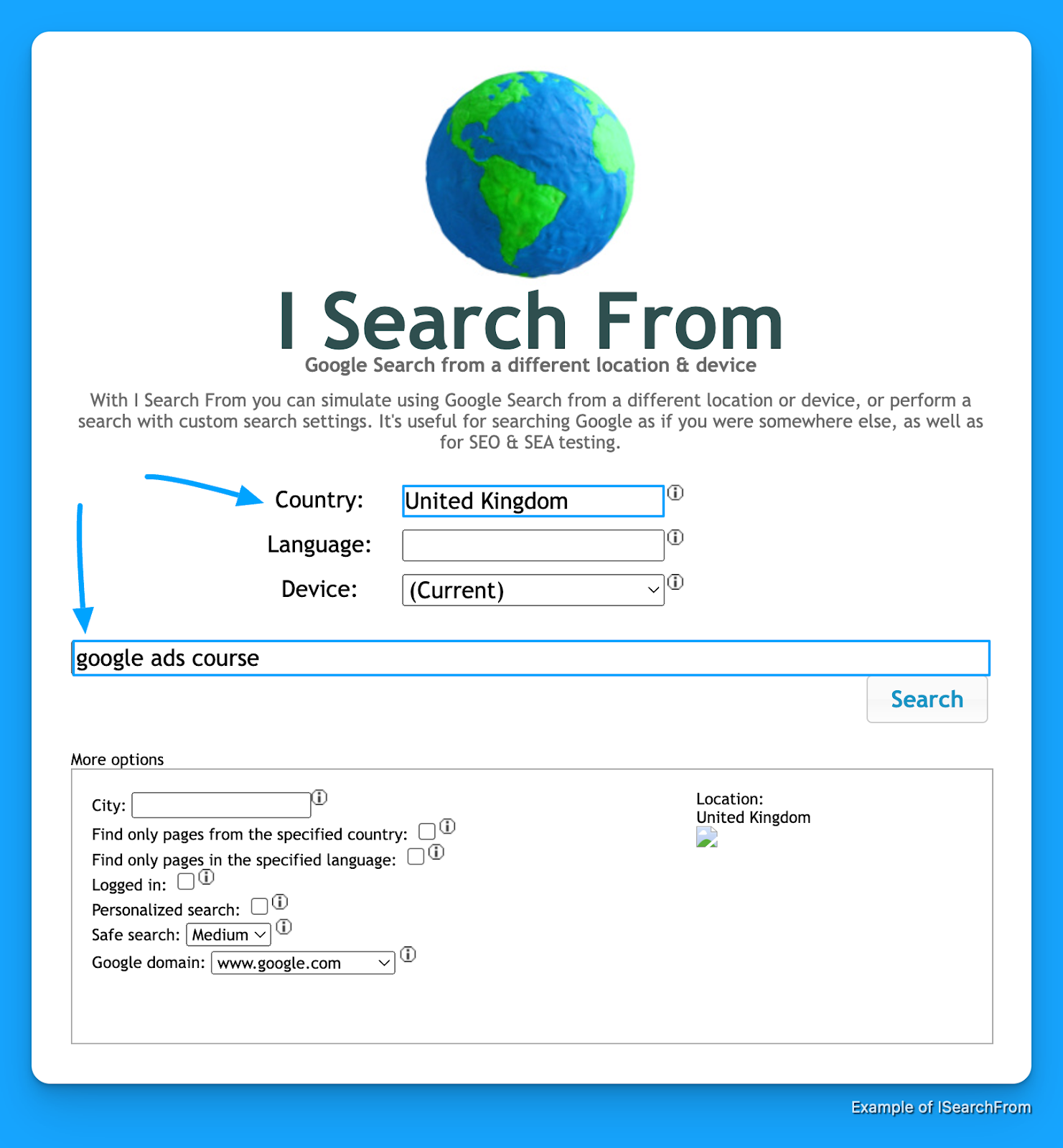
2. Review the ads to uncover advertisers in your target location you might not be aware of

From this simulated result for someone “physically” located in the United Kingdom I can see Coursera is advertising on google ads courses in this region.
From here I can leverage the Transparency Center to uncover more ad examples from them.
Again this is a great tool for finding competitors you’re not familiar with in locations you’re not in.
Paid Tools to Find Examples of Competitors Google Ads
Each of the following competitor analysis tools can be used for a fee, use whichever resonates and fits your budget.
SpyFu
Source: https://www.spyfu.com/
Price: $39-$79/month
If you’re looking for a simple tool to review examples of competitors Google Ads copy, target keywords, and landing pages.
SpyFu is a great tool to start off with, here’s how you can use it.
1. Visit SpyFu and enter your competitors domain

2. Review your competitors estimated Google Ads budget and quantity of paid keywords
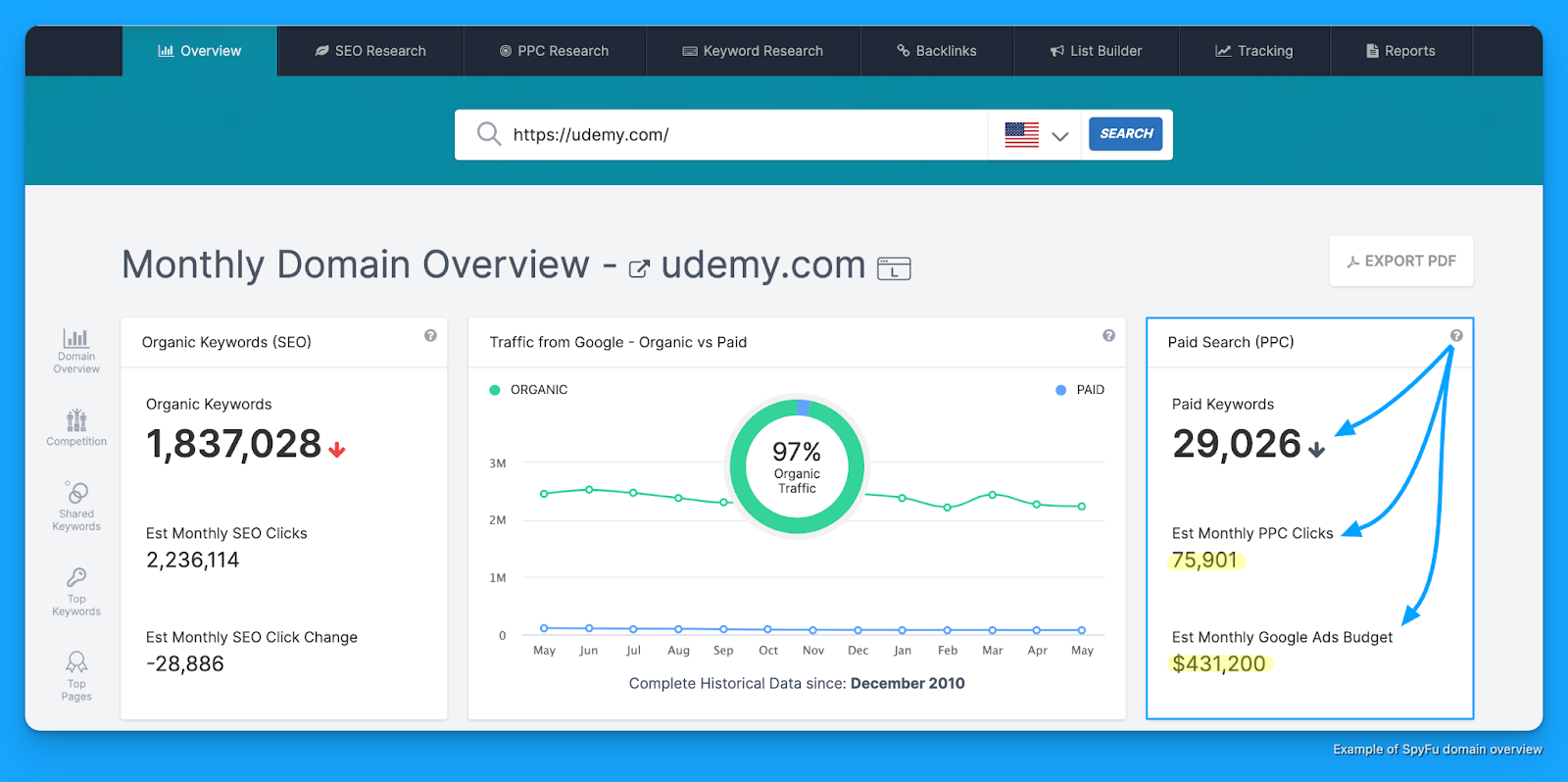
3. Navigate to “PPC Research > PPC Keywords” to see all paid keywords
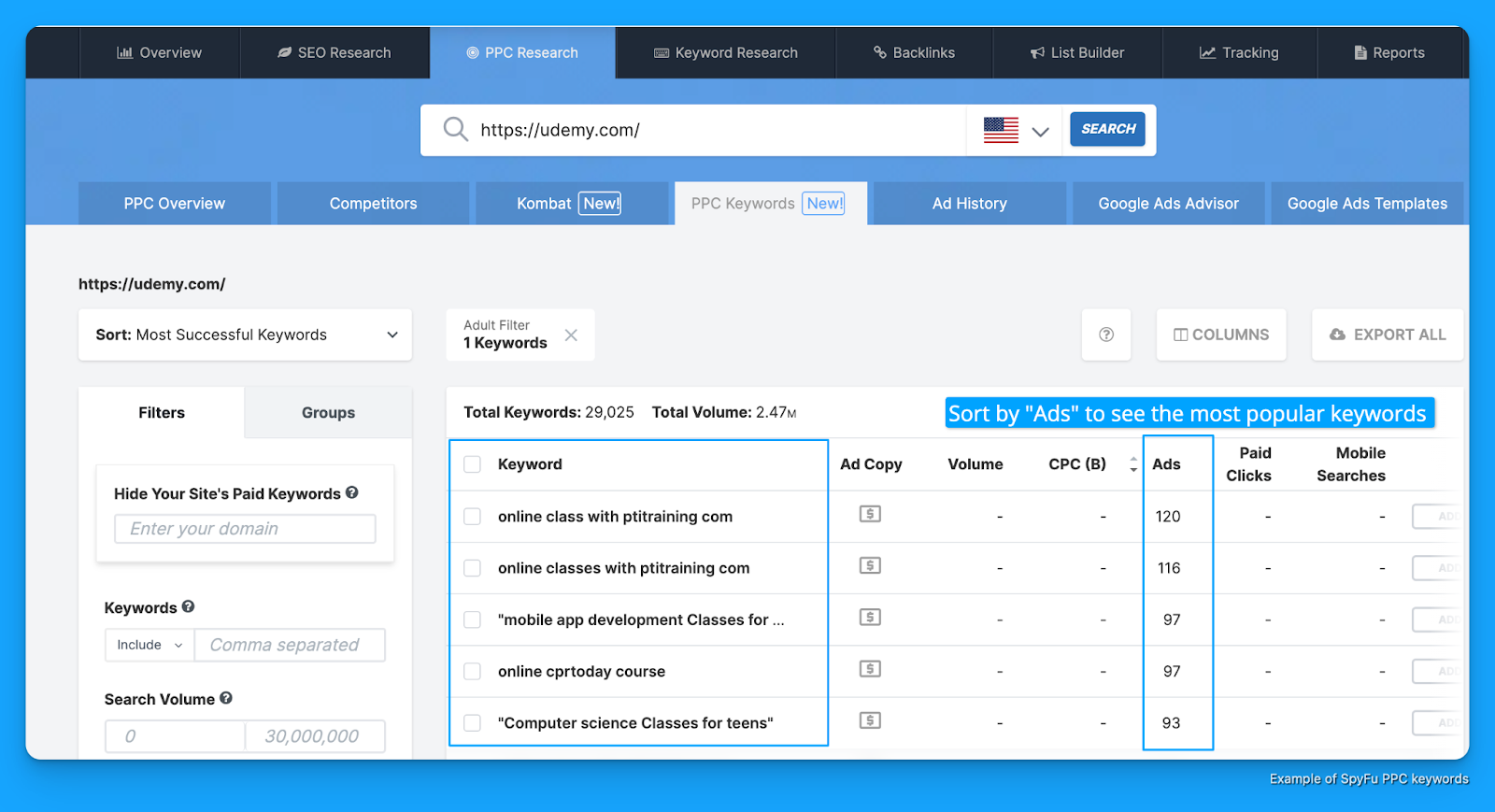
4. Head to “PPC Research > Ad History” to see all competitor ad examples by keyword
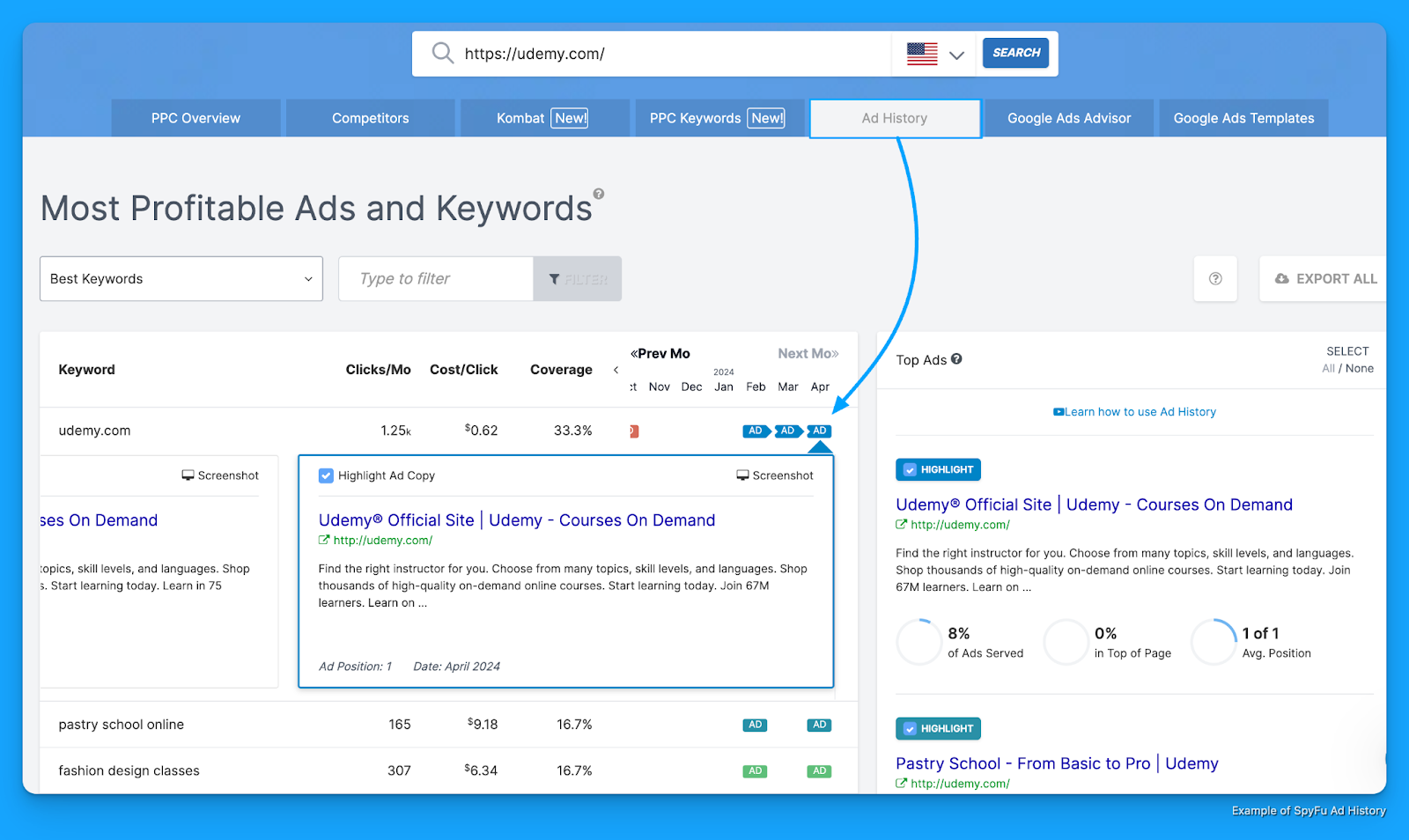
5. Uncover other top competitors “PPC Research > Competitors” you might know of
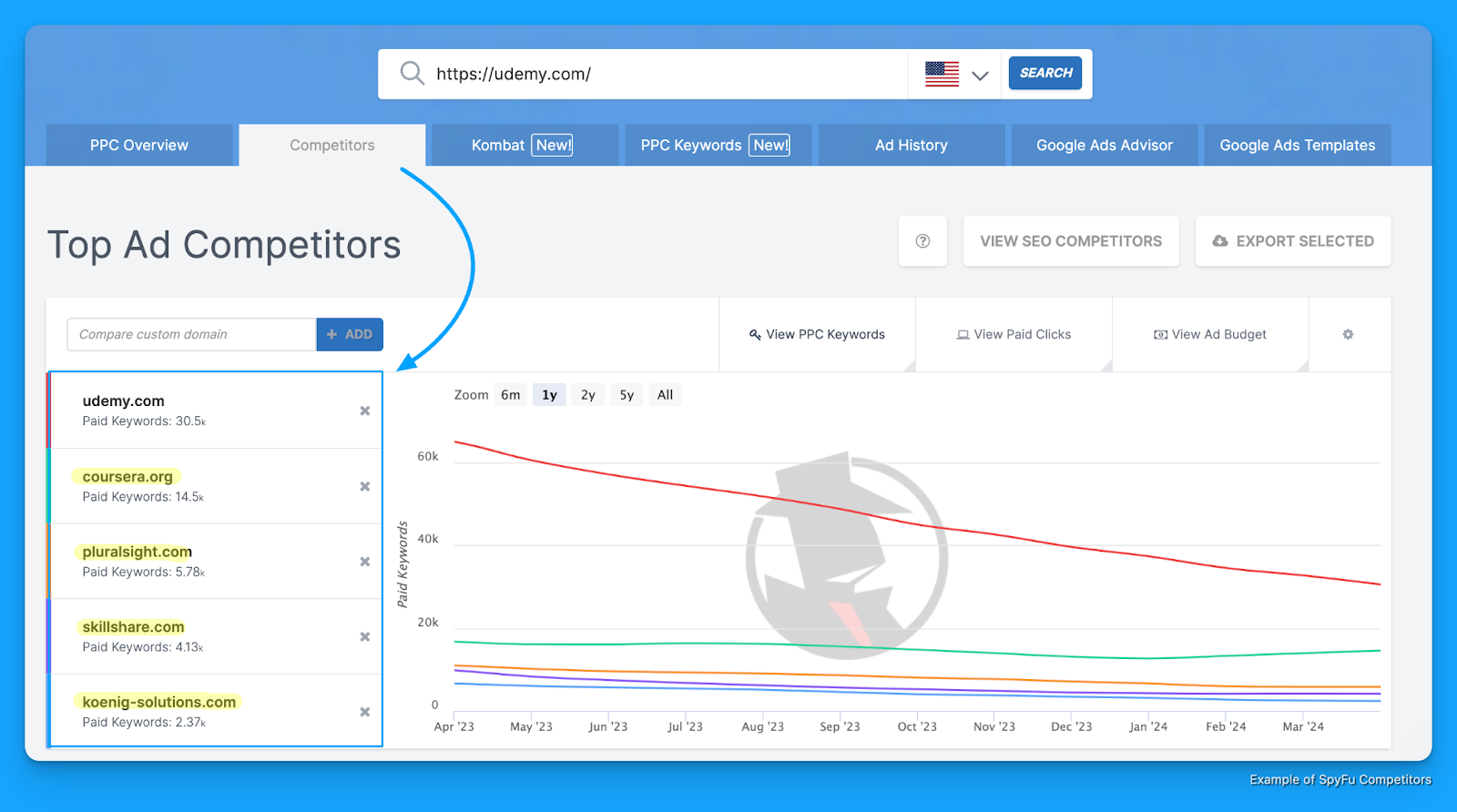
With this one tool you can get estimates of competitors' Google Ads budgets, review keywords, ads, and uncover opportunities across new competitors you might not know of.
Other paid tools:
There’s no shortage of paid tools you can use to research your competitors.
Here’s a list of some others worth exploring:
Don’t get hung up on the tools.
Achieving the end outcome is ultimately key.
Now that you know how to find and research your competitors Google Ads.
Let’s walk through how to break down their strategy.
How to Break Down Your Competitors Google Ads Strategy
Knowing what keywords and ad copy your competitors are using is a great starting point.
But getting answers to questions like:
- How are my competitors structuring their campaigns?
- How are they allocating budget?
are crucial insights that can separate you from them.
1. Reverse Engineering URL Parameters
Once you know your competitors landing pages, which you can get from:
- Searching keywords in Google and clicking on their ads
- Reviewing landing page URLs in SpyFu’s Ad History report
You’ll want to review their UTM parameters to get insights on the goal of this campaign, target keyword, and anything else around how it was set up.
URL Parameter Example #1 - Zoho
For example, I searched CRM software and clicked on this ad from Zoho:
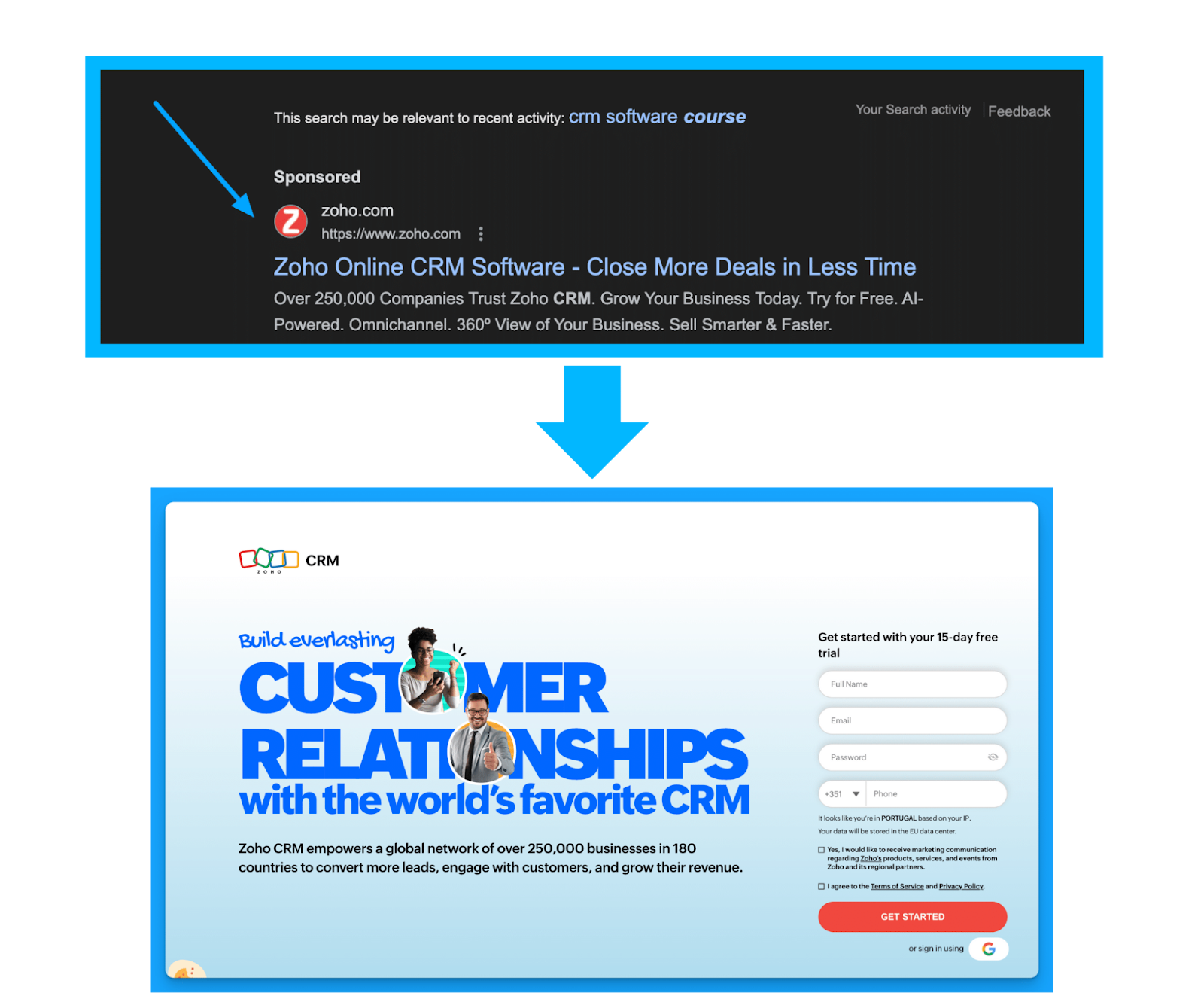
When reviewing the URL post click I can see the following parameters:
/?network=g&device=c&keyword=crm%20software&campaignid=14928929712
&creative=552506800726&matchtype=e
&adposition=&placement=&adgroup=130022006802&gad_source=1
&gclid=Cj0KCQjw3tCyBhDBARIsAEY0XNlAKXey
TKDzEJQDpeNh2giI4p8sVSnWKqsvlND5bvZa_J
q62wCqSFoaAsc1EALw_wcB
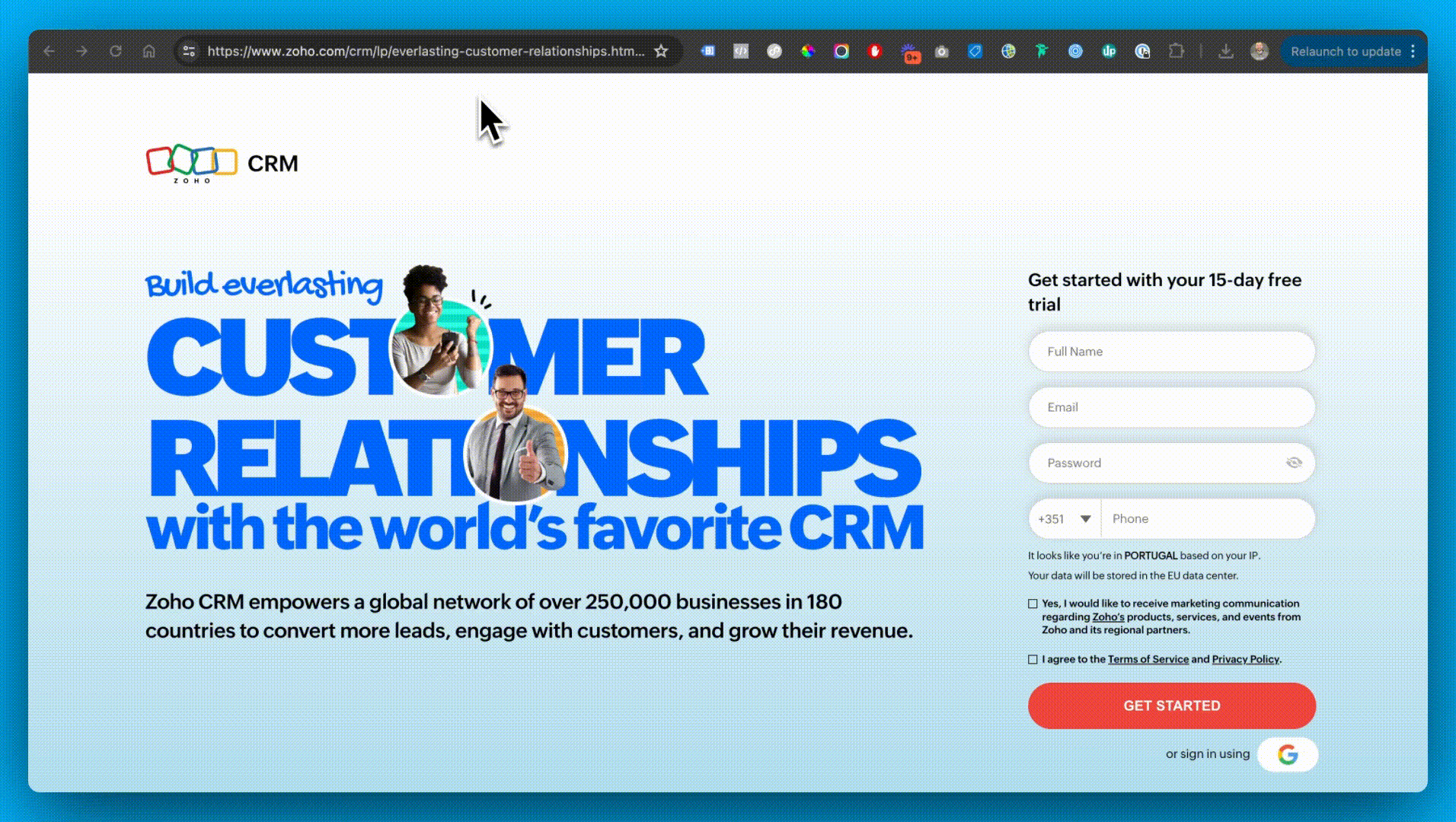
By reviewing the URL structure I can gather the following information:
- Network = g | they’re advertising on Google Search
- Device = c | they’re running ads on Desktop devices
- Keyword = crm software | they’re bidding on crm software
- Matchtype = e | they’re using exact match
URL Parameter Example #2 - Freshworks
Let’s use one more example to drive this home with the Freshworks ad that was underneath Zoho:
?tactic_id=6071454&utm_source=google-adwords&utm_medium=FSales-Search-InsideEU-FSE-RLSA-New
&utm_campaign=FSales-Search-InsideEU-FSE-RLSA New&utm_term=crm%20software&device=c
&matchtype=p&network=g
&gclid=Cj0KCQjw3tCyBhDBARIsAEY0XNkaG_AiGqCRYj-AEcuQcnvJS_3eI0bS6jIKu_
M7JRmqOYwSIGwuc6UaAvYqEALw_wcB&gad_source=1
Here’s what I’m able to gather from the URL structure:
- Source = google-adwords | they’re advertising on Google Search
- Campaign = FSales-Search-InsideEU-FSE-RLSA-New | they’re advertising in the EU and running a remarketing list for search ads campaigns.
- Term = crm software | they’re advertising on the keyword crm software
- Device = c | they’re bidding on desktop devices
- Matchtype = p | they’re using phrase match
With this information you can start to get answers into how your competitors are structuring their campaigns and it’s freely available and ready for those advertisers that are savvy enough to look.
2. Keyword Classification
How are your competitors allocating budget?
Now you’ll never know the answer to this question with absolute certainty but with some manual work here’s how you can try and piece together a sense of their strategy allocation.
You’ll need one of the paid tools listed above in order to perform this keyword analysis.
I’ll be using SEMRush for the sake of demonstration but the general process is the same across tools.
1. Export all of your competitors paid keywords into a CSV

2. Filter the Last Seen column by the most recent month to see active keywords

3. Add a new column called “Theme” and classify each keyword by campaign theme.
This step can take some significant time but can be well worth the effort to understand your competitors keyword strategy and budget allocation priorities.
With your custom column of “campaign theme” you’ll want to manually classify each keyword.
Here’s the four campaign themes you’ll utilize for classification:
- NonBrand = high-intent keywords that don’t include your brand name
- Brand = keywords containing your brand name
- Competitive = keywords that represent your competitors
- Content = keywords that are informational and research oriented
Watch this video for a deep dive on how to perform this advanced classification:
4. Summarize your classified keywords into a pivot table to understand your competitors strategy and budget priorities
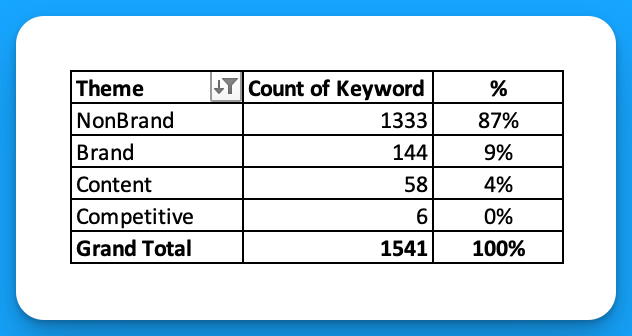
From here we can make some assumptions about what is working for our competitors.
- 87% of Udemy’s keywords are NonBrand, 9% Brand, 4% Content, and barely 0% Competitive.
- It’s safe to assume that the majority of the budget is supporting NonBrand, followed by Brand, Content, and ultimately Competitive.
Based on this allocation I might want to focus on NonBrand first given the volume of investment Udemy seems to be spending on it, and avoid competitive keywords to start.
This isn't 100% exact science but an advanced way to research your competitors Google Ads.
Need help calculating your stating Google Ads Budget?
If you’re in need of help calculating your starting Google Ads budget check out our calculator.
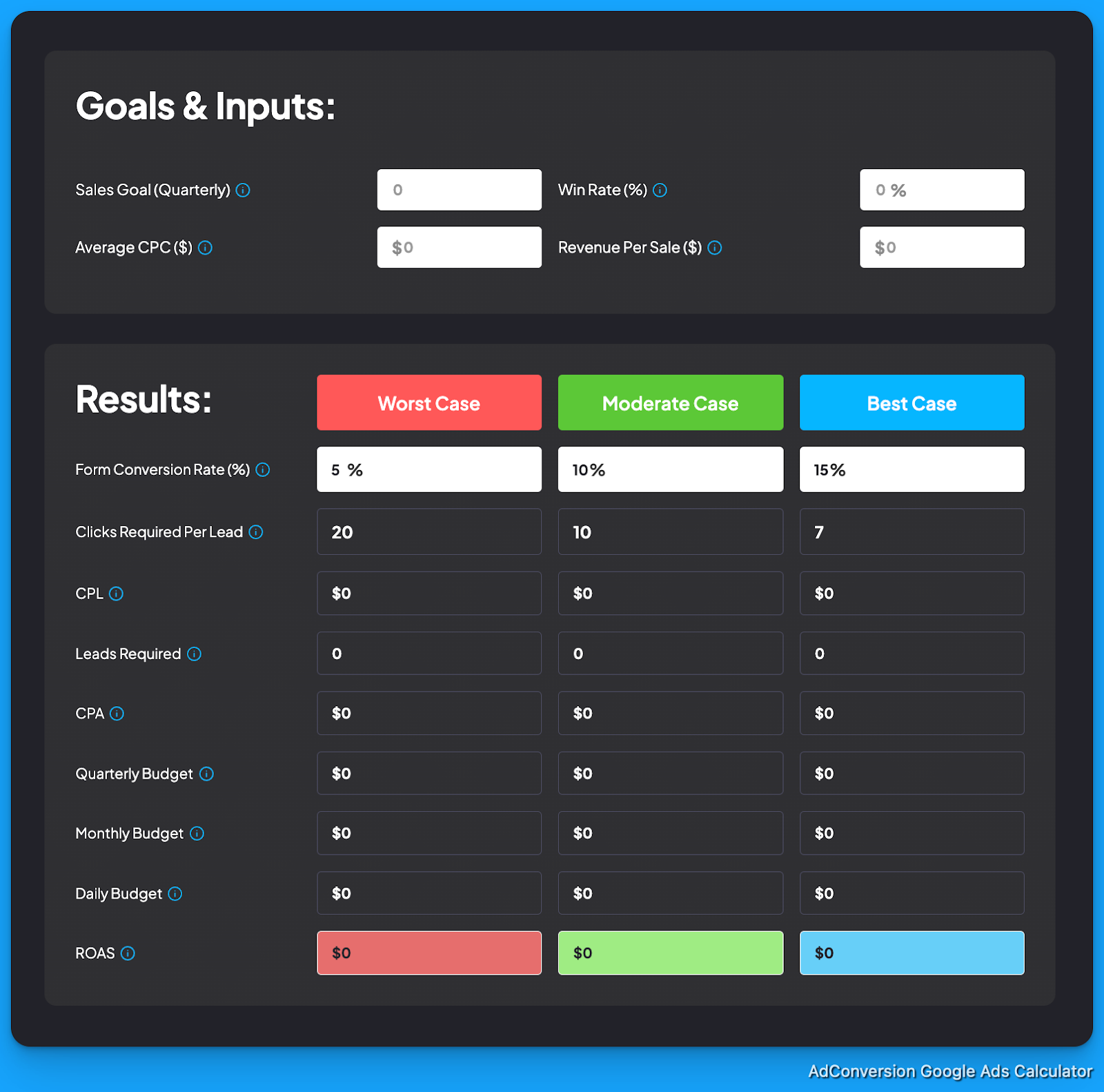
Hope you found this article useful!
See you in the next article or one of our free courses!
From Clicks to Conversions: Master Google Ads for B2B 🔥
If you want to become a Google Ads pro, check out our free B2B Google Ads courses, where you'll learn how to launch, optimize, and scale your campaigns to drive pipeline and revenue.

Here's what you'll learn in each course:
⚙️ B2B Google Ads 101 - How to Launch Dangerously Effective Campaigns for Beginners
- The Googleverse: The Game You're Playing & How To Win
- Measurement: How to Make Sure You're Profitable
- Targeting: How to Show Up For the Right Searcher
- Planning: Putting It All Together
🎯 Google Ads 102 - How to Clicks Into Profit
- Visibility: How To Find the Hole Sucking Profits
- Workflows: How to Optimize On a Daily, Weekly, Monthly & Quarterly Basis
- Experimentation: How to Test & Automate Profitability
- Troubleshooting: How To Solve Inevitable Problems
🚀 Google Ads 103 - How to Scale Google Ads For Advanced Advertisers
- Methodology: How to Vertically Scale Google Ads From A-Z
- Campaigns: Scaling Horizontally Through Campaign Themes
- Channels: Scaling Outside of Paid Search
Click Here to Join 1,000+ B2B Marketers Today and start leveling up your advertising skill set.
Takes < 90 seconds to sign up (seriously we timed it 😂)
People Also Ask
How can I identify indirect competitors in Google Ads?
Beyond direct competitors, consider businesses offering alternative solutions that address the same customer needs. Use tools like Google’s Keyword Planner to discover who is bidding on related keywords, revealing indirect competitors.
What are the ethical considerations when analyzing competitors’ ads?
While it’s acceptable to study competitors’ public ads, avoid deceptive practices like clicking on their ads to deplete budgets. Focus on gathering insights without engaging in unethical behavior.
How often should I conduct a competitor analysis for my Google Ads campaigns?
Regular analysis is crucial. Aim to review competitors’ strategies quarterly to stay informed about market trends and adjust your campaigns accordingly.
Can competitor analysis help in identifying new market opportunities?
Yes, by examining competitors’ ad strategies, you can uncover underserved niches, emerging trends, or gaps in the market, allowing you to capitalize on new opportunities.
How do I ensure my Google Ads stand out in a competitive landscape?
Focus on unique selling propositions, compelling ad copy, and high-quality visuals. Regularly test and optimize your ads to differentiate your offerings from competitors.

How To Get Your Ad Budget Approved In 2024
Looking to ask your boss or client for more ad budget?
This can feel really uncomfortable the first time but I promise it gets easier.
With a simple shift in mindset and some solid tactics you’ll be securing budget in no time.
Here are 3 simple but effective steps for you to implement before having that budget conversation.
TABLE OF CONTENTS
Step 1: Pull the numbers
Your client or boss wants to be successful.
They want to surpass their goals (just like you).
If you can show them how your increased budget will make this happen, they will gladly give it to you.
Remembering this will help you release the anxiety associated with asking for more budget.
The key is you need to sell your stakeholders on WHY they should invest more and the way you'll do that is by building a case that makes them as certain as possible.
Don’t assume your clients or managers will be able to realize this on their own.
Build a no-brainer case that makes saying anything but yes sound illogical.

This starts with pulling the numbers 👇
Answer your critical questions
Put your investor hat on and answer critical questions such as:
- Which channels are performing best?
Ex: Google Ads driving the most opps at the lowest cost
- What's the overall blended trend? (paid + organic)
Ex: Opps are increasing QoQ at a 25% lower cost
- What's the current return on investment?
Ex: $6 pipe-to-spend and 150% ROI
Depending on your company, goals, and what you’re asking budget for this will vary.
Brainstorm all of the key questions you’ll need to pull data to answer.
The difficulty of this step will vary on your current level of reporting.
If you don’t already I HIGHLY recommend building a Paid Media dashboard that connects your ad spend to pipeline and revenue performance reported in your CRM.
Here’s an example of our Paid Media Dashboard Template in our Building a Paid Media Program course:

You can get free access to this template and learn how to set it up in Module 3, Lesson 3 of the course.
It’s going to be hard to ask for more ad budget if you can’t prove that your current campaigns are actually contributing to the bottom line.
Don’t have any data?
If you’re reading this and saying, Silvio how can I pull numbers if I don’t have any?
Maybe you’re trying to secure budget for a new channel.
If this is the case I have two recommendations:
1. Run a pilot campaign for $100
Let’s say you’re trying to secure budget to test X (Twitter) Ads.
Put together $100 (most companies can afford this) and launch a pilot campaign.
The only goal of this campaign is to understand what are your real costs (ex: CPM, CPC).
Once you have this information you can work backwards from your goals to create a starting budget.
For example:
- $3 CPC at a 5% landing page conversion rate = $60 cost per lead
- $60 cost per lead at a 3% lead to opportunity ratio = $1,980 cost per opportunity
- $1,980 cost per opportunity at a 20% win rate = $9,900 cost per closed won deal
If you need help running the numbers, check out our Google Ads budget calculator.

From here you’ll have a good idea of what a starting budget would look like.
You’ll also have a sense of what’s possible on this channel.
2. Do some research
Ask around or search for benchmarks associated with the channel you’re looking to invest in.
Even just collecting anecdotal evidence (ex: screenshots of others) talking about how much success they’ve had with this specific channel, tactic, etc can go a long way.
LinkedIn polls are a great way to collect this feedback:

You can DM the respondents asking for more information.
The TL;DR here is don’t let lack of data be an excuse to show up empty handed.
Once you’ve pulled all the necessary information it’s time to find the story.
Step 2: Find the story
Behind the data there is a story being told, it's your job to find it and tell it.
Here's some key questions to answer to help find it:
- What went well? (the highlights)
- What went bad? (the lowlights)
- Where are we today vs before? (the journey)
- What were the biggest blockers? (the obstacle)
- Where do we go from here? (the opportunities)
Data alone won't persuade, and stories without data are subject to suspicion.
A combination of both is required in order to effectively present your case.

Image above is Module 6, Lesson 1 of our Building a Paid Media Program course
For example, perhaps I’m trying to secure more budget for Google Ads:
- What went well? (the highlights) some text
- Google Ads contributed 25% more opportunities at a $7 pipe-to-spend ratio.
- What went bad? (the lowlights)some text
- We missed out on 57% more volume due to budget limitations.
- Where are we today vs before? (the journey) some text
- We’ve optimized our pipe-to-spend efficiency from $3 to $7.
- What were the biggest blockers? (the obstacle)some text
- High search lost to budget for our top contributing campaigns.
- No landing page testing due to limited development resources.
- Where do we go from here? (the opportunities)some text
- With an additional $25,000 in budget we can scale our top contributing campaigns and yield up to 35% more demo requests at a $15 CPC and 5% landing page conversion rate.
Here’s a simple presentation template you can use to present your case and answer each key question:

Once you've found the story and pulled the numbers you're ready to present.
Step 3: Present your case
After steps 1-2 the majority of the prep work is done.
Now it’s time to get the meeting scheduled with your boss or client.
You could have the most beautiful slides and compelling case but if you can’t effectively communicate the significance of what you’re asking it won’t matter.
Thankfully, like any skill, communication is something you can improve on with practice.
5 unconventional tips to implement in your budget presentation:
1. Remember you both want the same thing.
Ultimately, your stakeholders want you to be right. If you can drive more pipeline/revenue they'd happily give you the budget (assuming financial availability).
The challenge though is like an investor they are analyzing the potential upside and downside of your plan, and don't believe the promises you're making.
You need to addresses their concerns with a combination of data and storytelling that makes them as certain as possible.
Just remembering this simple truth will help you show up differently.
2. It’s a conversation, not a lecture.
You’ll want to keep this discussion conversational.
Make sure to check-in frequently with your boss or client and ask things like:
- Is this making sense?
- Did you have any questions?
- Are there any concerns you have that I haven’t addressed?
The last thing you want to do is to speak to them for 30-minutes and then ask:
“soooooo did you have any questions…..? 😅”

3. Replace “I think” with “the data suggests”
You’ve pulled the data and done the homework.
Don’t water down your points by saying “I think” get in the habit of replacing this with “the data suggests” and then calling out the data point that comes to mind.
This will make your perspectives and points of view far more compelling.
Which ultimately lead to more certainty from the decision maker.
Greater certainty = greater chance of budget approval
4. Don’t forget to smile.
This might sound silly 😂 but it’s really easy to forget to smile.
This conversation is about new opportunities, and that’s exciting.
Instead of telling yourself I’m nervous, reframe it as I’m excited.
This is called anxiety reappraisal and Alison Wood a psychologist at the Harvard Business School found evidence to support.
Here’s a quick excerpt from her abstract: “Across several studies involving karaoke singing, public speaking, and math performance, I investigate an alternative strategy: reappraising anxiety as excitement. Compared to those who attempt to calm down, individuals who reappraise their anxious arousal as excitement feel more excited and perform better” — Alison Wood Brooks
Don’t knock it until you try it!
5. Turn your weakness into a strength
Maybe you’re reading this article and saying to yourself:
- I’m not a good presenter because I’m an introvert
- I’m not a good presenter because English isn’t my first language.
Whatever your weaknesses are, turn them into strengths with humor.
When you start budget approval call begin by addressing your big weakness with humor.
Here’s what this might look like for the weaknesses above:
- Hey {First Name} thanks for the time today. As you might have noticed I’m not going to be giving a Ted talk anytime soon with my English so if you’re having trouble understanding just stop me at any point.
- Hey {First Name} thanks for the time today. I just wanted to start off by saying I’d rather chug a bottle of hot sauce then give a presentation but I believe so much in what I’m going cover today that I had to do this – so I appreciate you baring with any mishaps I might have.
Whatever your weaknesses are don’t run from them.
Embrace it and transform it into a strength.
Additional Resources
If you want to learn more about securing budget checkout Module 6 - Lesson 1 of our Building a Paid Media Program course, it’s 100% free and takes < 90 seconds to sign up.

If you want to dive deeper into B2B advertising check out some of our other top articles:
- B2B Advertising in 2024: The Definitive Guide
- How to Build a Multichannel B2B Retargeting Strategy (Step-By-Step)
Thanks for reading, good luck on getting your budget approved!
(you got this) 🎉
People Also Ask
How can I address concerns about the risks associated with increasing the ad budget?
Acknowledge potential risks by presenting a risk mitigation plan. This could include strategies like phased budget increases, continuous performance monitoring, and predefined criteria for scaling back if certain KPIs aren’t met. Demonstrating proactive risk management can build stakeholder confidence.
What if my initial pilot campaign doesn’t yield strong results?
If a pilot campaign underperforms, analyze the data to identify areas for improvement. Adjust variables such as targeting, ad creatives, or bidding strategies, and consider running a second pilot. Use these learnings to refine your approach before requesting a larger budget.
How do I align my ad budget request with broader company objectives?
Ensure your proposal clearly connects the ad spend to company goals like revenue growth, market expansion, or brand awareness. Illustrate how the investment will contribute to these objectives, using data and projections to support your case.
What are some common pitfalls to avoid when presenting a budget proposal?
Avoid using jargon that stakeholders may not understand, overloading the presentation with excessive data, or failing to anticipate potential objections. Practice your presentation to ensure clarity and conciseness, and be prepared to address questions confidently.
How can I demonstrate the potential ROI of the proposed ad budget?
Utilize tools like the Google Ads Budget Calculator to forecast potential returns based on different budget scenarios. Present these projections along

Top 10 LinkedIn Tips on Mastering Objectives & Bid Strategies
Looking to increase your return on ad spend (ROAS) on LinkedIn?
Your bidding strategy and campaign objective play a critical role.
Here’s my 10 tips from over $10 million investment in LinkedIn paid ads.
(In no particular order, they all matter)
TABLE OF CONTENTS
- Tip #1: The Power Behind Manual Bidding
- Tip #2: Fine-Tuning Your Bids
- Tip #3: Aligning Ad Type & Offer with Objectives
- Tip #4: The Optimal Objective for Thought Leader Ads
- Tip #5: When to Leverage Video Views Objective
- Tip #6: Match Your Content to the Most Suitable Objective
- Tip #7: Take Advantage of Document Ads
- Tip #8: Scale Conversions with Conversation Ads
- Tip #9: Top 3 Objectives for Single Image Ads
- Tip #10: When to Avoid Reach Objective (Brand Awareness)
- Conclusion:
- Resources for Mastering B2B Advertising
Tip #1: The Power Behind Manual Bidding
Unlike automated bidding, which leaves bid amounts at LinkedIn's discretion, manual bidding allows advertisers to set clear cost boundaries.
This ensures that your campaign expenses align with your budgetary constraints and campaign goals, offering a level of precision that automated bidding simply can't match.
By specifying the maximum amount you're willing to pay for clicks, the manual bidding places you in the driver's seat.
The LinkedIn algorithm, while powerful, may not always allocate your budget most economically when given full control.
Start collecting data quickly for your new campaign by bidding above the minimum threshold recommended by LinkedIn.

When to Consider Automated Bidding:
Automated bidding can be the best choice for specific situations, such as focused Account-Based Marketing (ABM) or retargeting campaigns with small audiences.
Once the campaign starts spending and there’s a benchmark, you can switch to manual bidding to regain full control.
Tip #2: Fine-Tuning Your Bids
A successful manual bidding requires daily checks on your spending against your budget to avoid overbidding or underbidding.
This is a straightforward yet insightful process, comparing the previous day's spend against the current daily budget to adjust your bids for optimal performance.
The Process of Bid Adjustment:
By subtracting your daily budget from the previous day's total spending, you gain clear insights into your bidding strategy's effectiveness.
A negative result suggests underbidding, where you're not fully utilizing your daily budget
While a positive result indicates overbidding, where you're potentially overspending.
Previous day spent - allocated budget = + number indicated bid is too high
The previous day spent - allocated budget = - number indicated bid is too low”
One challenge of manual bidding is finding the sweet spot where your bid is high enough to consume your daily budget fully but not so high that it leads to inefficient spending.

Side note:
If your audience size is too small, even a high bid will not cover the campaign’s full budget.
Tip #3: Aligning Ad Type & Offer with Objectives
LinkedIn ad campaigns' success deeply depends on the alignment between the chosen ad type and the content you're promoting.
Understanding the nuances of each ad + offer and matching it to the applicable objective is key to maximizing engagement and conversion rate.
Selecting the Right Ad Type for Your Objective:
Video Ads:
When promoting video ads, gravitate towards the Video View or Engagement objectives.
These objectives are designed to maximize viewership and interaction with your video content, making them ideal for capturing and retaining audience attention.
Example of a video ad:

Document Ads:
The Engagement objective tends to yield the most success for document ads, which include PDFs, presentations, and other downloadable content.
Keeping document ads ungated and focusing on engagement allows your content to reach a broader audience, enhancing brand visibility and thought leadership.
Example of a document ad:

Single Image Ads:
Engagement and Website Traffic objectives can be effective when using single-image ads.
Your choice depends on whether your primary goal is to foster interaction with the ad or drive traffic to your website or landing page
Example of a single image ad:

Tip #4: The Optimal Objective for Thought Leader Ads
If you're looking to boost your presence and authority on LinkedIn, thought leader ads present an attractive option.
These ads turn organic content from individual profiles into sponsored messages, maintaining the authentic voice and personal touch that resonates with audiences.
These campaigns can achieve lower costs per engagement by leveraging the engagement objective, enhancing their effectiveness and reach.
Understanding Thought Leader Ads:
Personal Touch:
Unlike standard ads that originate from company pages, thought leader ads come from personal profiles, offering a humanized approach to advertising.
This method harnesses the inherent trust and relatability of individual thought leaders, amplifying their messages across targeted audiences on LinkedIn.
As of March 2024, businesses can promote content from any connected user on LinkedIn with Thought Leader posts, as opposed to just verified employees.
Seamless Integration:
To the audience, thought leader ads appear as regular posts but with the added benefit of targeted reach and visibility.
This seamless integration into the newsfeed portrays a natural engagement experience, hence fostering higher engagement rates compared to traditional ad formats.
Implementation and Best Practices
The success of thought leader ads hinges on selecting organic content that has already demonstrated shares and engagement.
By sponsoring high-performing posts, you capitalize on proven interest and ensure your ad budget is allocated to content with the highest potential return.
Pro tip:
When creating a new single-image campaign, you can click “browse existing content” to find the post by searching for the LinkedIn member and sending a request for approval.
Since these ads will not be sent to a landing page, it’s best to place the intended page link in the first comment and pin the comment.


Tip #5: When to Leverage Video Views Objective
When promoting video ads, selecting the Video View objective will increase the likelihood of getting the highest percentage of videos watched at the lowest cost.
This objective is designed to maximize the number of views your video receives, optimizing for visibility and engagement among your target audience.
Creative Specifications:
For video creatives, the recommendation is to use a square format (1080x1080 pixels) and include captions.
This format is not only visually appealing but also takes up the most space in the feed property.
Cost Efficiency and Performance:
The cost for video views on LinkedIn typically ranges from 10 to 15 cents per view.
While this might be higher compared to other platforms like YouTube, which has been gaining traction in B2B sectors for its cost-effectiveness, LinkedIn's targeted audience can justify the investment.
Best Practices for Video Campaigns on LinkedIn:
Starting with the lowest feasible cost per view (CPV) in your bidding strategy can help manage costs while assessing the content's performance.
Adjustments can be made based on initial results to find the optimal balance between reach and budget efficiency.
Tip #6: Match Your Content to the Most Suitable Objective
Understanding the type of content you're promoting determines the most effective objective and ad type for your campaign.
For event promotions, for example, certain ad formats have proven to yield higher results and drive registrations at a lower cost.
Let’s break down what type of assets yield the highest results for this example:
Lead Generation Forms (LGF):
The premier choice for driving event registrations.
Lead-gen forms provide a seamless and streamlined user experience, with pre-populated forms making the conversion process as frictionless as possible.
The convenience of instantly filling out forms within the LinkedIn platform significantly increases conversion rates for registrations.

Pro tip:
To improve the performance of LGF, it's best to keep the number of custom fields below three.
While leveraging pre-populated fields can maintain high conversion rates, adding more than two custom questions or actions can deter completions.
Event Ad Format:
This is one of the most effective ad types for event registries, but it is important to note that it cannot be combined with any of the conversion objectives.
Unique to this type of ad is the inclusion of social proof directly within the ad, such as the number of people who have shown interest or are planning to attend the event.
While its conversion rate may not match that of Lead Generation Forms, the added visibility and credibility from social proof make Event Ads a valuable tactic.

To learn more about promoting events, dive into these articles below:
- 4 Unique LinkedIn Ad Strategies to Drive More Webinar Registrants
- 10 Insider Tips on Event Promotion From $1M+ In Ad Spend
Website Conversion:
Directing users to a landing page for event registration is generally less preferred due to higher costs and lower conversion rates compared to previous tactics.
Exceptions exist, such as directing traffic to a calendar link or for specific targeting scenarios, but overall, this method is seen as less efficient for event promotion.
Design and Copy Considerations:
For campaigns opting to use landing pages, prioritizing copy over design is key.
The hero section, or above-the-fold content, is critical in capturing user interest.
Ensuring message consistency between your ads and landing page, alongside efficient conversion tracking, will set you up for success.
To learn more about landing page best practices, dive into the article below by Pedro Cortés:
10 Proven Landing Page Tips To Boost Your Conversion Rates
Pro-tip:
Streamlining Campaign Tracking with Dynamic URL Parameters:
LinkedIn's introduction of dynamic URL parameters at the campaign level presents a major leap forward in simplifying and enhancing tracking capabilities.
This feature allows marketers to set up the tracking once for the entire campaign, eliminating the tedious process of manually tagging each ad with unique UTM parameters.

Tip #7: Take Advantage of Document Ads
Document ads have proven highly effective for marketers looking to deepen engagement and build a robust retargeting pool.
They typically have impressive click-through rates, often reaching 6-7% or higher.
The best results from document ads are seen when paired with the engagement objective.
Users who interact with this ad type demonstrate a clear interest in your content, making them ideal candidates for subsequent, more targeted marketing efforts.
For more information on setting up your first document ads, check out this guide provided by LinkedIn
Tip #8: Scale Conversions with Conversation Ads
Conversation ads offer a unique, direct method of engaging with your target audience by delivering messages right into their LinkedIn inboxes.
These ads are billed on a cost-per-send basis, making it crucial to manage bids effectively to maximize both reach and budget efficiency.
Start your bid as low as possible and make adjustments depending on how well it’s pacing.
A good starting point is a $1 bid.
Due to LinkedIn’s second-price auction model for convo ads, they typically keep the actual cost close to the average historical cost per send.
This model charges you just enough to outbid the next highest bidder, not the maximum amount you're willing to pay.
Adaptation to Platform Changes:
Despite recent updates like the focus inbox change on LinkedIn, conversational ads have continued to perform well.
The direct nature of these ads keeps them effective, maintaining their status as a top-performing ad type.
Best Practices for Conversational Ads:
Because convo ads are more intrusive than other ad types, it’s important to ensure your targeting is precise. This precision prevents user annoyance and increases the likelihood of engagement.
The content of your conversation ads should be compelling and offer clear value to a specific job function.
Pro-tip:
The sender should resonate with the target audience for the highest credibility.
Choosing someone with a similar job function or an industry expert/influencer can immediately boost credibility.
For additional tips on convo ad’s best practices, check out this post by AdConversion

Tip #9: Top 3 Objectives for Single Image Ads
Single-image ads are versatile and can be tailored to meet various objectives, but understanding which objective to prioritize can have a noticeable impact on the effectiveness of your campaigns.
Lead Generation:
The primary objective for many single-image ad campaigns is lead generation.
LinkedIn’s Lead-gen focuses on gathering user information through forms that are pre-populated with LinkedIn profile data, making it easier for users to submit their information without leaving the platform.
Engagement:
The second most common objective for single-image ads is engagement.
This objective aims to maximize interactions such as likes, comments, and shares.
It's particularly useful for increasing brand visibility and engagement within your target audience.
Fostering interactions also enhances the organic reach of your ads through the network effects of user engagement.
The visual appeal and message of your single-image ad should resonate with your audience and encourage interaction.
Regular testing and adaptation of your ad creatives can help maintain high engagement levels.
Website Visits:
The third objective focuses on driving traffic to your website or specific landing pages to achieve conversions.
Whether your goal is to increase sign-ups, sales, or another conversion action, directing users to your website allows for more detailed tracking and nurturing of potential leads in your sales funnel.
Tip #10: When to Avoid Reach Objective (Brand Awareness)
Brand awareness, which prioritizes impressions and broad visibility, often comes under scrutiny due to its cost implications and lower engagement metrics compared to other objectives.
The reach objective operates on a cost-per-impression (CPM) model, where you are charged each time your ad is displayed, regardless of user interaction.
This can lead to higher expenditure without the guarantee of equivalent engagement or conversions.
The inherent nature of paying for mere visibility rather than actionable engagement makes this objective less appealing for many advertisers seeking tangible returns on their investment.
This objective is also inefficient for retargeting.
Building retargeting audiences requires not just impressions but meaningful interactions that signal interest or intent.
The reach objective's focus on maximizing views rather than fostering engagement makes it less effective for gathering a meaningful contribution toward the retargeting pool.
Conclusion:
In this article, we covered 10 actionable tips for matching the most suitable objectives and bidding strategies to your LinkedIn campaigns.
Whether it’s choosing manual bidding to control costs, aligning ad types with your marketing objectives, or understanding when to leverage specific ad formats, each tip offers a pathway to better performance.
By implementing these top 10 tips, you can navigate through the complexities of LinkedIn paid ads with greater precision and efficiency.
I hope you found this article insightful and that it leads to successful outcomes for your future campaigns.
If you’d like to reach out or get more tips, please connect with me via LinkedIn.
Master B2B LinkedIn Ads with these 3 Free Courses:
If you want to become a LinkedIn Ads pro, check out our free B2B LinkedIn Ads courses, where you'll learn how to launch, optimize, and scale your campaigns to drive pipeline and revenue.
%2520(1).jpeg)
Here's what you'll learn in each course:
⚙️ B2B LinkedIn Ads 101 - The Ultimate Crash Course for New LinkedIn Advertisers
- Foundations For LinkedIn Ads Success
- Measurement: Tracking & Key Principles
- Targeting: Reaching Your Dream Buyers
- Ads: Mastering The 9 Ad Formats
🎯 B2B LinkedIn Ads 102 - The Blueprint for LinkedIn Ads Optimization
- Monitoring: How To Spot Performance Trends
- Auditing: How To Find The Darlings You Need To Kill
- Reporting: How To Transform Data Into Insights
- Optimization: How To Make Your LinkedIn Ads Profitable
🚀 B2B LinkedIn Ads 103 - Advanced Scaling Strategies From $25M In Ad Spend
- Concepts of Scaling
- Divide and Conquer
- Learnings From $25M+ In LinkedIn Ad Spend
Click Here to Join 1,000+ B2B Marketers Today and start leveling up your advertising skill set.
Takes < 90 seconds to sign up (seriously we timed it 😂)
People Also Ask
How can I determine the optimal bid amount for my LinkedIn ad campaigns?
Begin by setting bids slightly above LinkedIn’s recommended minimum to gather initial data. Monitor daily performance, adjusting bids to ensure your budget is fully utilized without overspending. Regular analysis helps in finding the balance between cost-efficiency and achieving desired reach.
What are the best practices for aligning ad creatives with specific campaign objectives?
Ensure that your ad format and content match your campaign goals. For instance, use Video Ads with the Video View objective to maximize engagement, or Document Ads with the Engagement objective to share downloadable content effectively. Aligning creatives with objectives enhances campaign performance.
How do I choose between manual and automated bidding strategies?
Manual bidding offers control over costs, allowing precise budget management, while automated bidding leverages LinkedIn’s algorithm for potentially broader reach. For Account-Based Marketing (ABM) or retargeting campaigns with small audiences, automated bidding can be effective. However, starting with manual bidding can provide valuable insights and control.
What factors should I consider when selecting the appropriate campaign objective?
Identify your primary marketing goal—brand awareness, lead generation, website traffic, etc. Choose objectives that align with these goals and consider the ad formats that best support them. For example, use the Engagement objective for Thought Leader Ads to boost authority and reach.
How can I effectively measure the success of my LinkedIn ad campaigns?
Track key performance indicators (KPIs) such as click-through rates (CTR), conversion rates, cost per click (CPC), and return on ad spend (ROAS). Regularly analyze these metrics to assess performance and make data-driven adjustments to your strategies.
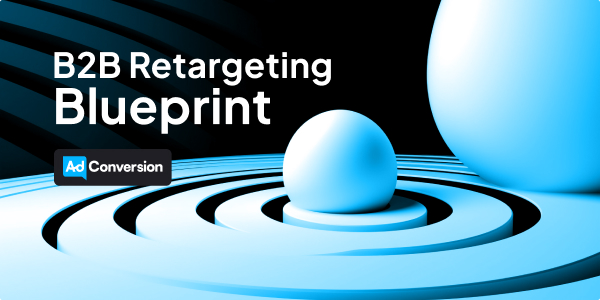
How to Build a Multichannel B2B Retargeting Strategy (Step-By-Step)
With long sales cycles staying top of mind is half the battle when it comes to B2B.
In this blueprint you’ll learn how to build a multichannel B2B retargeting strategy across:
- Meta (Facebook & Instagram)
- X (Twitter)
- & YouTube
So you can stay omnipresent and convert users across channels.
I know you’re going to love it, let’s get started! ❤️
TABLE OF CONTENTS
- Recommended Channels
- Step 1: Confirm Your Remarketing Pixels are Installed
- Step 2: Create all possible retargeting segments by time frame
- Step 3: Adjust targeting and exclusion parameters
- Step 4: Align on retargeting content and offers
- Step 5: Build all Relevant Retargeting Campaigns
- B2B Retargeting FAQ
- Launch Checklist
- Conclusion & Free Courses
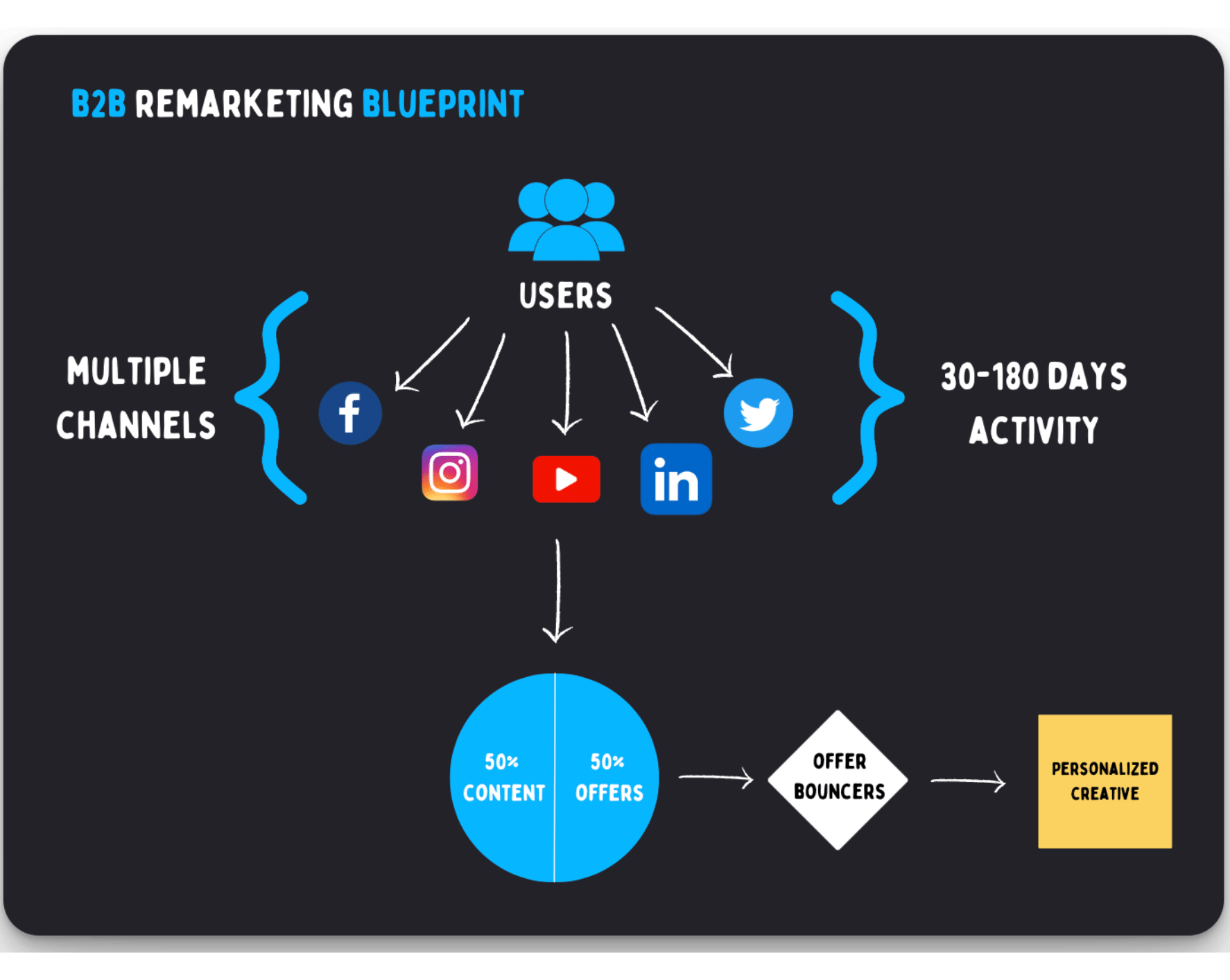
Recommended Channels:
- LinkedIn Ads
- Meta (Facebook & Instagram)
- X (Twitter)
- YouTube
Minimum Budget:
- $1,000/month (for 1 channel)
Recommended Targeting:
Step 1: Confirm Your Remarketing Pixels are Installed
This is a mandatory first step, and something that needs to be done first.
These pixels are how the ad platforms are able to track users activity and provide you the ability to remarket them with various campaigns and offers.
Even if you’re not planning to advertise soon on any channels, I HIGHLY recommend creating a free ad account and installing that platform pixel on your site to start building your remarketing pool.
Here’s what this will look like for each channel.
How to Install the LinkedIn Ads Pixel In 4 Steps
- Create a free LinkedIn Ads account
- Navigate to the “Analyze” → “Insight Tag” section
- Choose how to install your tag (recommend Google Tag Manager aka GTM)
- In Google Tag Manager, create a new tag type with LinkedIn Insight and fire on all pages
.png)
How to Install the Meta (Facebook & Instagram) Ads Pixel In 6 Steps
- Create a free Facebook Ads account
- In the Ads Manager navigate to “Events Manager” → “Connect Data Sources”
- Connect “Web” as a new data source and name your pixel (ex: Meta Pixel)
- Select your new pixel under “Data Sources” and navigate to “Overview” → “Setup Pixel”
- Choose how to install your pixel (recommend Google Tag Manager aka GTM)
- In Google Tag Manager, create a new tag type with Custom HTML and fire on all pages

How to Install the X (Twitter) Ads Pixel In 4 Steps
- Create a free X (Twitter) Ads account
- In the Ads Manager navigate to “Events Manager” → “Add Event Source”
- Install with “Pixel code” and allow 1st-party cookies
- In Google Tag Manager, create a new tag type with Custom HTM and fire on all pages

How to Install the Google Ads Pixel In 5 Steps
By installing the Google Ads pixel you’ll be able to remarket to website visitors on YouTube because Google owns YouTube and all campaigns are created in the same ads manager.
- Create a free Google Ads account
- In the Ads Manager navigate to “Audience Manager” → “Your Data Sources”
- Select “Google Ads Tag” → “Edit Source”
- Select “Tag Setup” recommend “Use Google Tag Manager” and copy your ID
- In Google Tag Manager, create a Google Ads Remarketing tag and fire on all pages

Once complete, confirm all pixels are installed correctly on your website with GTM Preview:
.png)
Remarketing audience size requirements for Meta, YouTube, LinkedIn & X (Twitter)
- Meta (Facebook & Instagram) = 1,000 audience members
- YouTube = 100 audience members
- LinkedIn = 300 audience members
- X (Twitter) = 100 audience members
Now that you’ve installed all the pixels for the platforms you’re interested in you’ll need to allow the pixels time to build your cookie pool to meet audience minimums.
I’ve seen it take 7-30+ days depending on monthly engagement or traffic volumes for the retargeting segment you’re trying to build (ex: website visits, video views, post engagement, etc..).
Step 2: Create all possible retargeting segments by time frame.
Once your remarketing audience has met minimums it’s time to build your segments.
This step will vary depending on how large your retargeting audience is.
In a perfect world we’ll want to create retargeting segments for the following timeframes:
The advantage of creating retargeting segments by time frame is:
✅ Easily see which cohort performs best
✅ Allocate more budget to the top performing time frame
✅ Align offers and messaging accordingly
Watch this video to better understand the thought process behind leveraging different remarketing segments by timeframes:
In addition to testing timeframes we want to combine as many relevant remarketing segments together in each cohort so we can scale up our overall audience size (more on this in Step 4).
Depending on the channel you’re advertising on, the available remarketing segments will vary.
Here are my go to choices for each channel below.
Top 10 LinkedIn Ads retargeting segments:
Top 9 Meta (Facebook & Instagram) Ads retargeting segments:
Top 5 X (Twitter) Ads retargeting segments:
Top 4 YouTube Ads retargeting segments:
Depending on your audience sizes you might not be able to use shorter timeframes.
If that’s the case, default to the next longest one:
For example:
❌30 days < 1,000 audience size? Try 90 days
❌90 days < 1,000 audience size? Try 180 days
❌180 days < 1,000 audience size? Hold off on remarketing until your audience sizes build
Build out each relevant remarketing combination for the channels you want to advertise on.
Step 3: Adjust targeting and exclusion parameters.
Equally important to who you’re targeting is who you exclude.
With all your retargeting segments created it’s clear who you’re going to target.
Now it’s time to get clear on who you’ll exclude for each cohort (e.g. 30, 90, 180 days).
Exclusion audiences allow you to remove users who aren’t a good fit for your targeting.
Here’s my go-to exclusions by channel.
Top 8 LinkedIn Ads Exclusion Audiences:
Top 9 Meta (Facebook & Instagram) Ads Exclusion Audiences:
Top 6 X (Twitter) Ads Exclusion Audiences:
Top 6 YouTube Ads Exclusion Audiences:
Feel free to remove and add the exclusions that make sense for your business and who you’re ultimately trying to reach with your retargeting campaigns.
By no means should you only use the ones I outlined above, some will make sense others won’t.
Once you’re clear on who you’ll exclude it’s time to align on content and offers.
Step 4: Align on retargeting content and offers.
Now that you’re clear on who you’ll target and exclude for each cohort. Let’s chat about what content and offers you’ll want to show them.
First things first, don’t make the mistake of only showing offers to people in your remarketing audience. This is the equivalent of following someone all day asking them to buy something.
This is what Corporate Bro has to say about that 😂

Recommended B2B Remarketing Budget Allocation:
Avoid leaving a bad impression and potentially hurting your brand by also adding content in the mix.
50% of your remarketing budget should go towards adding value to your audience, and 50% goes towards asking them to convert on something (ex: Demo, Trial, Event, etc…)
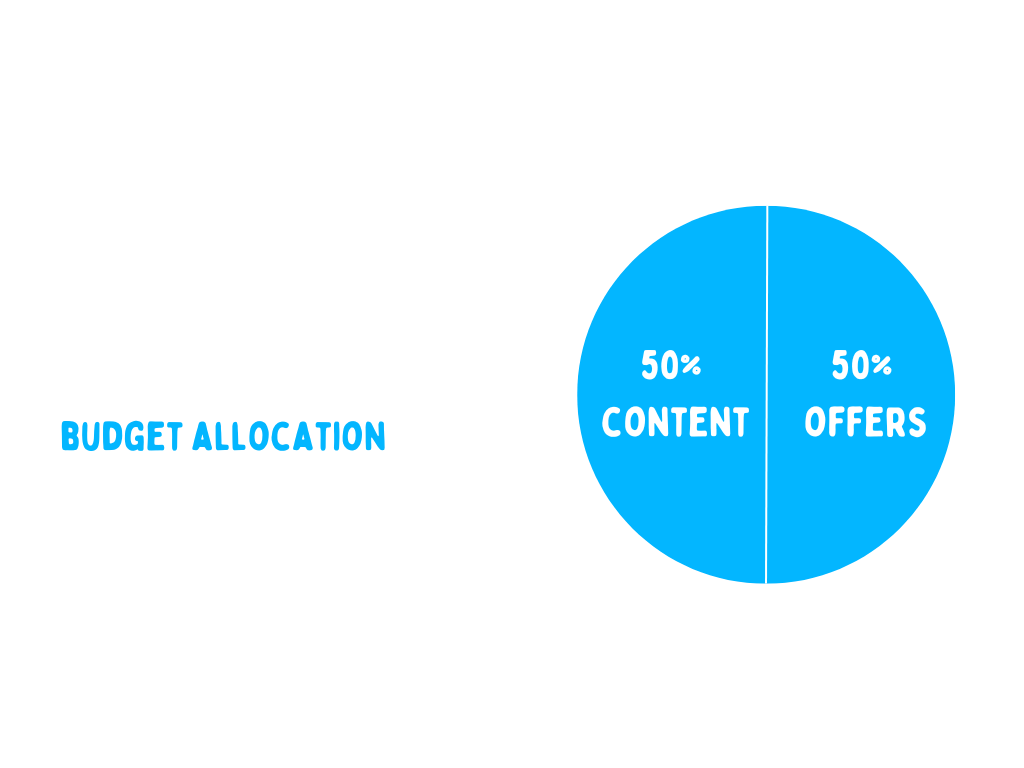
With this budget allocation you’re rotating offers and content equally to your remarketing cohorts (e.g. 30, 90, 180 days) and letting the users decide which asset they're interested in.
Which leads us to common remarketing mistakes you’ll want to avoid.
4 Common Mistakes to Avoid with Retargeting:
1. Only promoting offers
Avoid a pitch fest and split your remarketing budget 50/50 between content and offers as outlined above.
2. Retargeting on assumption instead of action
Don’t create these crazy retargeting flows where someone must do X then Y and finally you’ll give them Z. This kills your retargeting audience size and you’re assuming that you’ll be correct 3/3 times (idk about you but I’m not great at guessing).
Instead show them everything equally (content and offers) and then once they decide to click on an ad, watch a video etc… you can now create unique campaigns to remarket off that activity (now you’re no longer assuming they are interested).
3. Not using all available retargeting segments
Don’t rely on 1 segment alone like a website visitor segment. Instead combine multiple segments together with an OR statement in the same timeframe to scale up your overall retargeting audience so you have more flexibility to layer filters.
4. Failing to refresh creative to offset fatigue
There’s nothing worse than seeing the same ad 1,000 times. This can be easily avoided by creating a workflow to refresh your creatives on a monthly basis.
Just changing the creatives for the same offers and content will create a new experience for users and help offset ad fatigue.
Watch this video to learn more about how to monitor and overcome ad fatigue:
When we talk about remarketing content and offers equally – what exactly does that mean?
- White papers?
- Webinars?
- Tutorials?
- Demos?
- Trials?
The list goes on, and on…
There are 1,000s of offers and content you could potentially promote.
To help simplify and conceptualize this, here are 4 useful remarketing buckets inspired by Canberk Beker, Global Head of Paid Media at Cognism from episode 2 of Behind the Ads.
Recommended Remarketing Buckets by Timeframe:
B2B Retargeting Ad Examples:
Product Marketing
(Content that focuses on promoting the capabilities of your product)
Social Proof
(Leveraging others words and results in our ads)
.png)
Thought Leadership
(Content that educates your target audience and positions you as an expert)
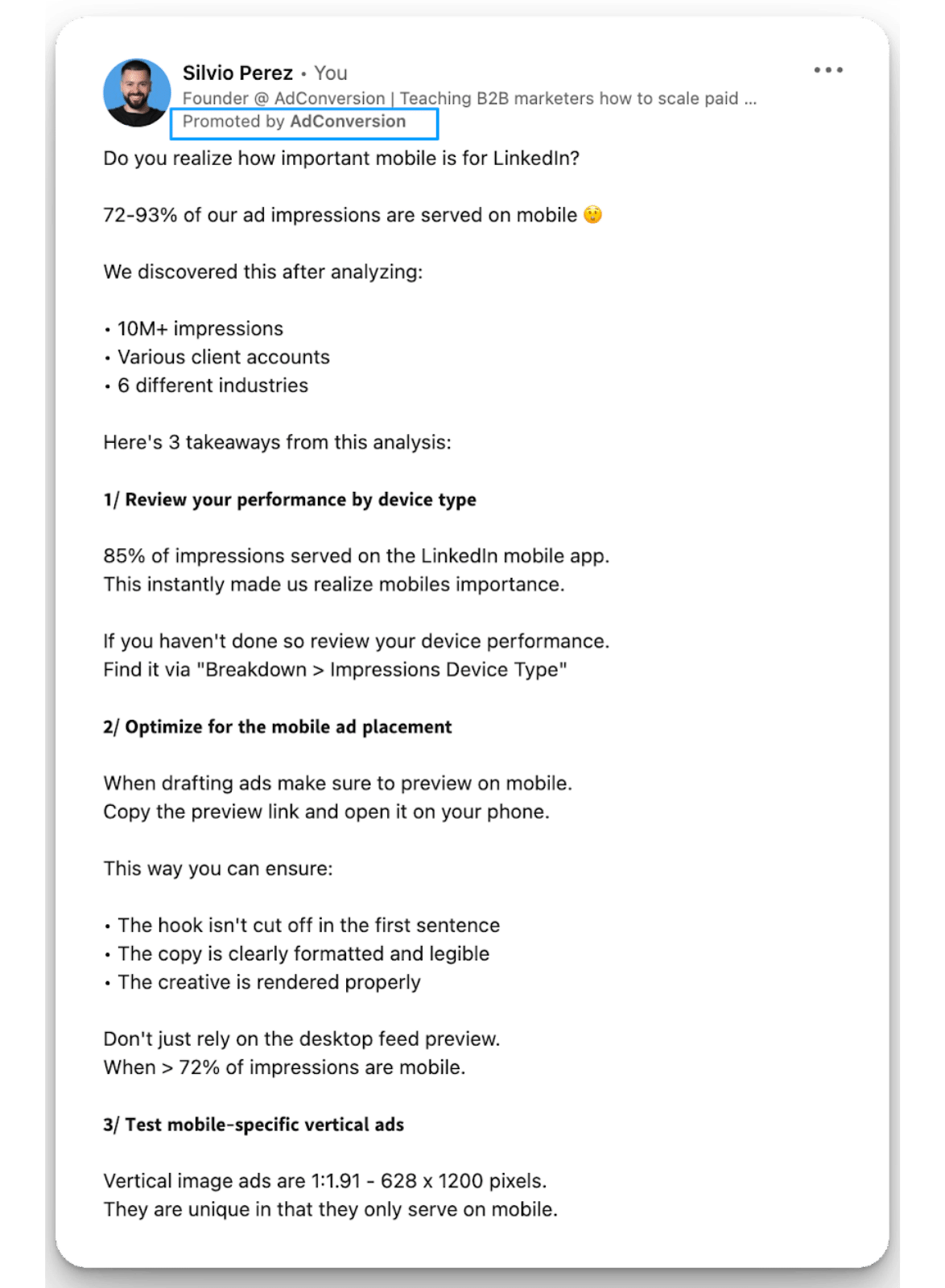
Offers
(Any other type of ad where you’re asking your target audience to convert)
.png)
Armed with your content and offers by time frame there’s one last step to do.
Step 5: Build all Relevant Retargeting Campaigns.
After going through steps 1-4 you should be clear on:
- Which channels you’re going to advertise on
- What retargeting segments you’ll leverage
- Which exclusion audiences you’ll block
- What content/offers you’ll showcase
Let’s wrap up with how these campaigns should be built.
B2B Retargeting Campaign Structure:
Here’s what the retargeting campaign structure will look like at 10,000 feet:
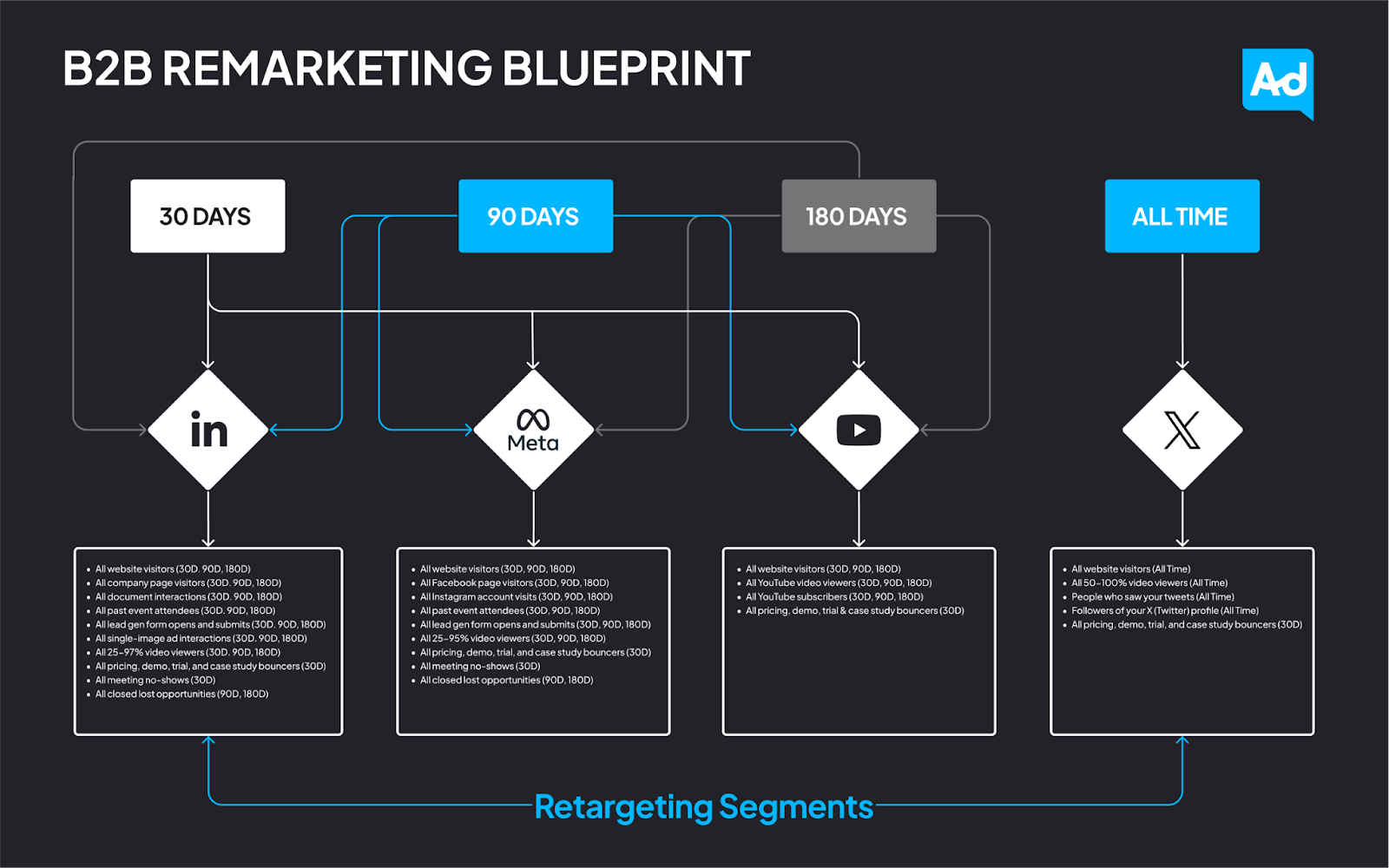
Couple of important call outs:
Every campaign has its own unique timeframe and retargeting bucket.
This makes pacing, optimization, and reporting really easy.
All retargeting segments within the same timeframe are grouped together as an OR.
This allows you to scale your retargeting audience size overall within the cohort.
Combine segments together with OR not AND.
Naming conventions are clear and consistent from the campaign to ad level.
This allows you to easily find your campaigns and reporting on performance.
Here’s how to build these campaigns out for each channel.
How to Build LinkedIn Retargeting Campaigns:
Make sure to disable Audience Expansion and the LinkedIn Audience Network for all LinkedIn retargeting cohort campaigns.


This will prevent LinkedIn from serving your ads to people not in your retargeting audiences and outside of the LinkedIn platform.
Create the following campaigns in the LinkedIn Ads campaign manager across whichever timeframes are applicable for your account:
Cohort #1: 30-Day LinkedIn Retargeting
Campaign Name: {Location} | {Offer} | Remarketing (30D) | {Ad Type} | {Objective}
- EX: USA | PM Content | Remarketing (30D) | Image | Awareness
- EX: USA | Demo | Remarketing (30D) | Video | Conversions
- EX: USA | Social Proof | Remarketing (30D) | Carousel | Engagement
Recommended Objectives:
- Content focus = Brand Awareness, Engagement, Video Views
- Conversion focus = Lead Generation or Conversion
Recommended Daily Budget: $25-$100/day
Recommended Audiences (layer titles or function if possible):
- All website visitors (30D)
- All company page visitors (30D)
- All document interactions (30D)
- All past event attendees (30D)
- All lead gen form opens and submits (30D)
- All single-image ad interactions (30D)
- All 25-97% video viewers (30D)
- All closed lost contacts (30D)
Recommended Bid Strategies:
- Content focus = Maximize delivery
- Conversion focus = Manual CPC
Ads: Product marketing content, social proof, offers (ex: Demo, Trial)
.png)
Cohort #2: 90-Day LinkedIn Retargeting
Campaign Name: {Location} | {Offer} | Remarketing (90D) | {Ad Type} | {Objective}
- EX: USA | PM Content | Remarketing (90D) | Image | Awareness
- EX: USA | Demo | Remarketing (90D) | Video | Conversions
- EX: USA | Social Proof | Remarketing (90D) | Carousel | Engagement
- EX: USA | Thought Leadership | Remarketing (90D) | Image | Awareness
Recommended Objectives:
- Content focus = Brand Awareness, Engagement, Video Views
- Conversion focus = Lead Generation or Conversion
Recommended Daily Budget: $25-$100/day
Recommended Audiences (layer titles or function if possible):
- All website visitors (90D)
- All company page visitors (90D)
- All document interactions (90D)
- All past event attendees (90D)
- All lead gen form opens and submits (90D)
- All single-image ad interactions (90D)
- All 25-97% video viewers (90D)
- All closed lost contacts (90D)
Recommended Bid Strategies:
- Content focus = Maximize delivery
- Conversion focus = Manual CPC
Ads: Product marketing content, social proof, offers (ex: Demo, Trial), thought leadership
.png)
Cohort #3: 180-Day LinkedIn Retargeting
Campaign Name: {Location} | {Offer} | Remarketing (180D) | {Ad Type} | {Objective}
- EX: USA | PM Content | Remarketing (180D) | Image | Awareness
- EX: USA | Demo | Remarketing (180D) | Video | Conversions
- EX: USA | Social Proof | Remarketing (180D) | Carousel | Engagement
- EX: USA | Thought Leadership | Remarketing (180D) | Image | Awareness
Recommended Objectives:
- Content focus = Brand Awareness, Engagement, Video Views
- Conversion focus = Lead Generation or Conversion
Recommended Daily Budget: $25-$100/day
Recommended Audiences (layer titles or function if possible):
- All website visitors (180D)
- All company page visitors (180D)
- All document interactions (180D)
- All past event attendees (180D)
- All lead gen form opens and submits (180D)
- All single-image ad interactions (180D)
- All 25-97% video viewers (180D)
- All closed lost contacts (180D)
Recommended Bid Strategies:
- Content focus = Maximize delivery
- Conversion focus = Manual CPC
Ads: Product marketing content, social proof, offers (ex: Demo, Trial), thought leadership
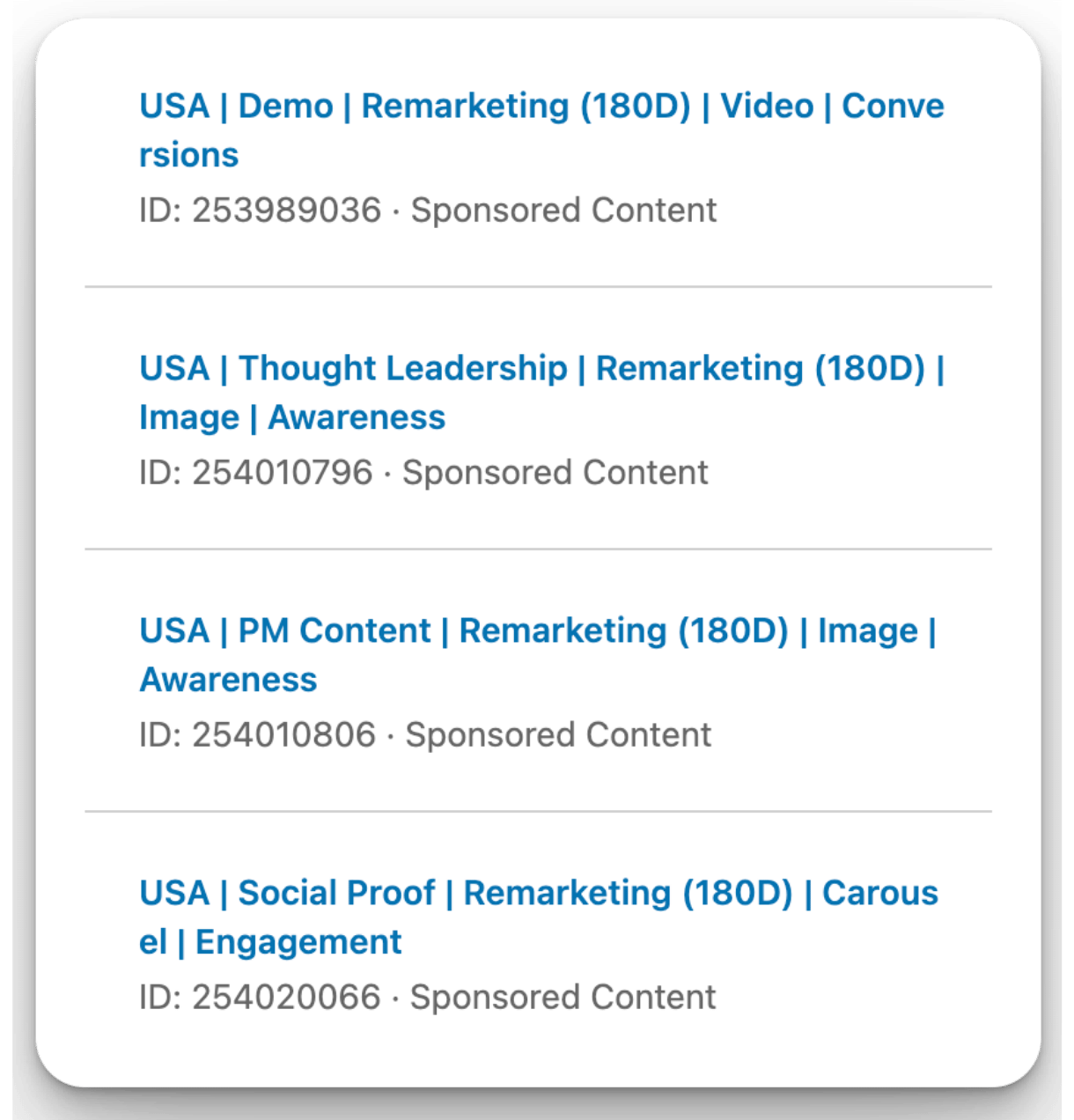
Optional: 30-Day LinkedIn Offer Bouncers Campaign
If you have the audience size available creating an offer bouncer campaign that shows personalized creative to folks who visited your intent pages and didn’t convert is worth testing.
Campaign Name: {Location} | {Offer} | {Offer Name Bouncers} (30D) | {Ad Type} | {Objective}
- EX: USA | Demo | Demo Page Bouncers (30D) | Conversation | Lead Gen
Recommended Objectives:
- Conversion focus = Lead Generation or Conversion
Recommended Daily Budget: $25-$100/day
Recommended Audiences (layer titles or function if possible):
- All pricing, demo, trial, and case study bouncers
- All meeting no-shows
Recommended Bid Strategies:
- Conversion focus = Manual CPC
Ads: Offers
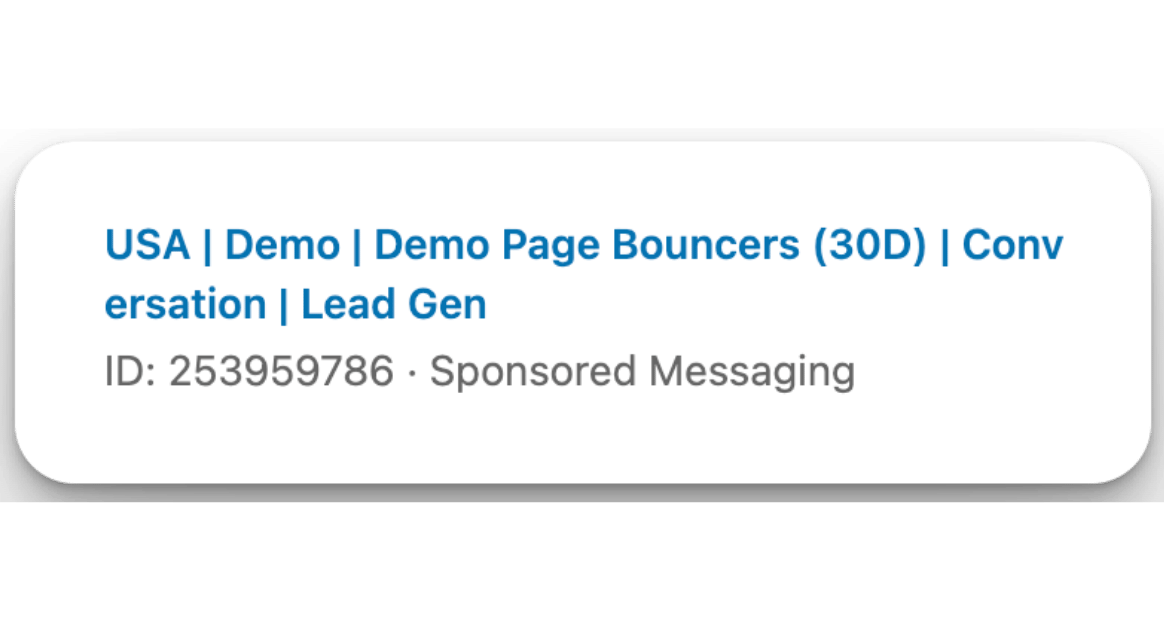
How to Build Meta (Facebook & Instagram) Retargeting Campaigns:
Highly recommend selecting manual placements of feeds and stories for Facebook & Instagram with creative in the correct dimensions to prevent your ads from appearing in the wrong formats.
Also don’t recommend delivering on the Audience Network or Video Feeds based on our past results, and make sure to not to run on Reels unless you have unique creative for that placement.
Always make sure your creative matches the placement it appears for.
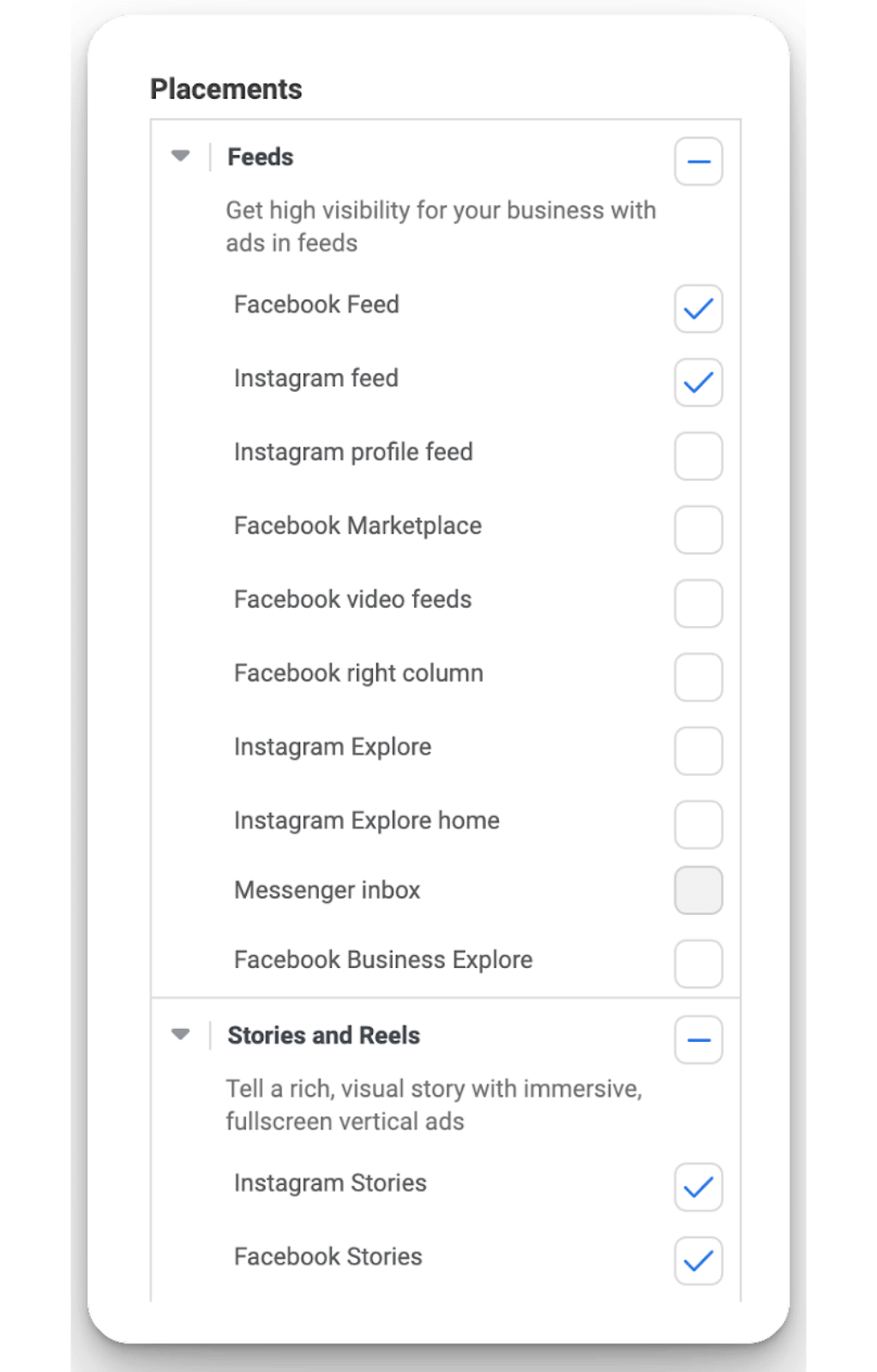
Create the following campaigns in the Meta Ads campaign manager across whichever timeframes are applicable for your account:
Cohort #1: 30-Day Meta Retargeting
Campaign Name: {Location} | {Offer} | Remarketing (30D) | {Ad Type} | {Objective}
- EX: USA | PM Content | Remarketing (30D) | Image | Awareness
- EX: USA | Demo | Remarketing (30D) | Video | Sales
- EX: USA | Social Proof | Remarketing (30D) | Carousel | Traffic
Recommended Objectives:
- Content focus = Awareness, Traffic, Engagement
- Conversion focus = Leads or Sales
Recommended Daily Budget: $25-$100/day
Recommended Audiences:
- All website visitors (30D)
- All Facebook page visitors (30D)
- All Instagram page visitors (30D)
- All past event attendees (30D)
- All lead gen form opens and submits (30D)
- All 25-95% video viewers (30D)
- All closed lost contacts (30D)
Recommended Bid Strategies:
- Content focus = Maximize reach of ads, link clicks, engagement, or views
- Conversion focus = Maximize number of conversions or leads
Ads: Product marketing content, social proof, offers (ex: Demo, Trial)

Cohort #2: 90-Day Meta Retargeting
Campaign Name: {Location} | {Offer} | Remarketing (90D) | {Ad Type} | {Objective}
- EX: USA | PM Content | Remarketing (90D) | Image | Awareness
- EX: USA | Demo | Remarketing (90D) | Video | Sales
- EX: USA | Social Proof | Remarketing (90D) | Carousel | Traffic
- EX: USA | Thought Leadership | Remarketing (90D) | Image | Engagement
Recommended Objectives:
- Content focus = Awareness, Traffic, Engagement
- Conversion focus = Leads or Sales
Recommended Daily Budget: $25-$100/day
Recommended Audiences:
- All website visitors (90D)
- All Facebook page visitors (90D)
- All Instagram page visitors (90D)
- All past event attendees (90D)
- All lead gen form opens and submits (90D)
- All 25-95% video viewers (90D)
- All closed lost contacts (90D)
Recommended Bid Strategies:
- Content focus = Maximize reach of ads, link clicks, engagement, or views
- Conversion focus = Maximize number of conversions or leads
Ads: Product marketing content, social proof, offers (ex: Demo, Trial), thought leadership
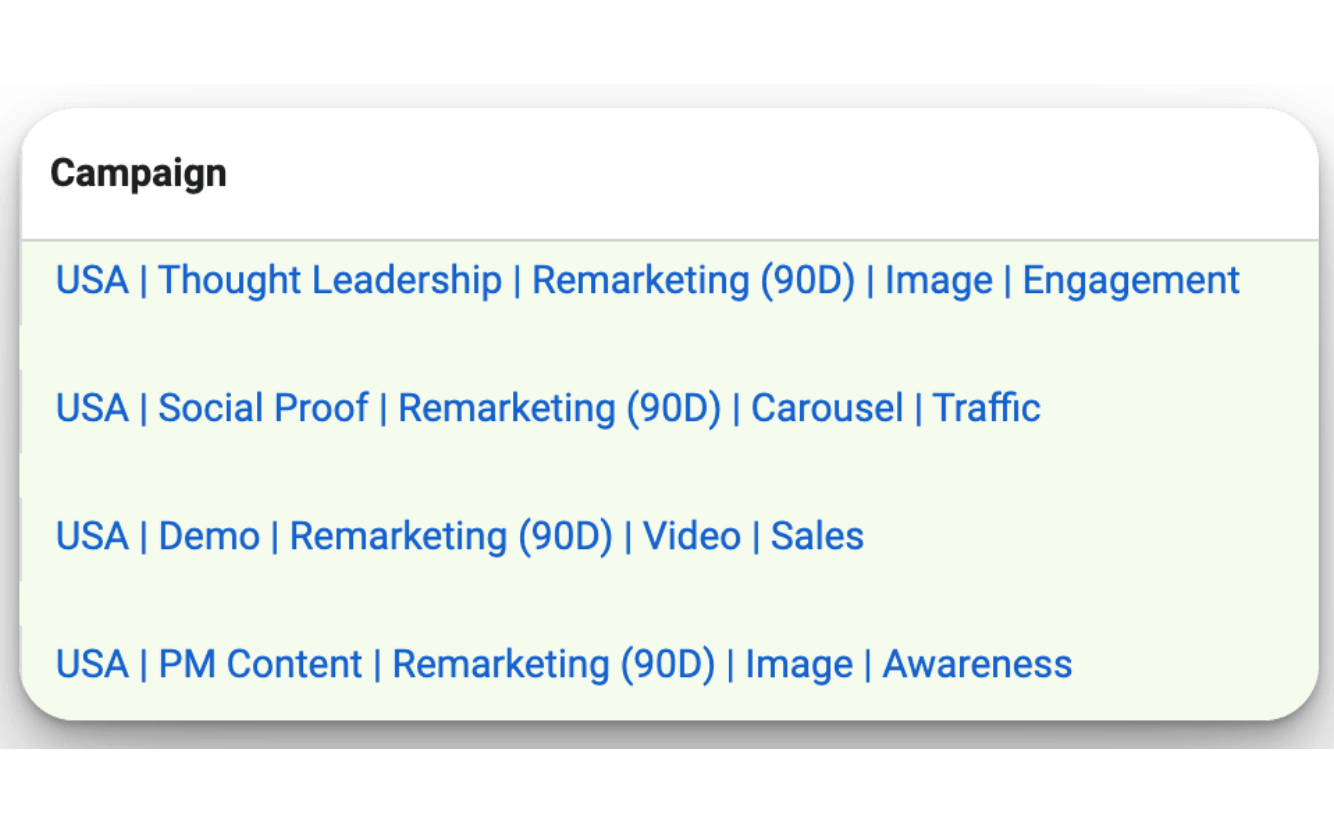
Cohort #3: 180-Day Meta Retargeting
Campaign Name: {Location} | {Offer} | Remarketing (180D) | {Ad Type} | {Objective}
- EX: USA | PM Content | Remarketing (180D) | Image | Awareness
- EX: USA | Demo | Remarketing (180D) | Video | Sales
- EX: USA | Social Proof | Remarketing (180D) | Carousel | Traffic
- EX: USA | Thought Leadership | Remarketing (180D) | Image | Engagement
Recommended Objectives:
- Content focus = Awareness, Traffic, Engagement
- Conversion focus = Leads or Sales
Recommended Daily Budget: $25-$100/day
Recommended Audiences:
- All website visitors (180D)
- All Facebook page visitors (180D)
- All Instagram page visitors (180D)
- All past event attendees (180D)
- All lead gen form opens and submits (180D)
- All 25-95% video viewers (180D)
- All closed lost contacts (180D)
Recommended Bid Strategies:
- Content focus = Maximize reach of ads, link clicks, engagement, or views
- Conversion focus = Maximize number of conversions or leads
Ads: Product marketing content, social proof, offers (ex: Demo, Trial), thought leadership
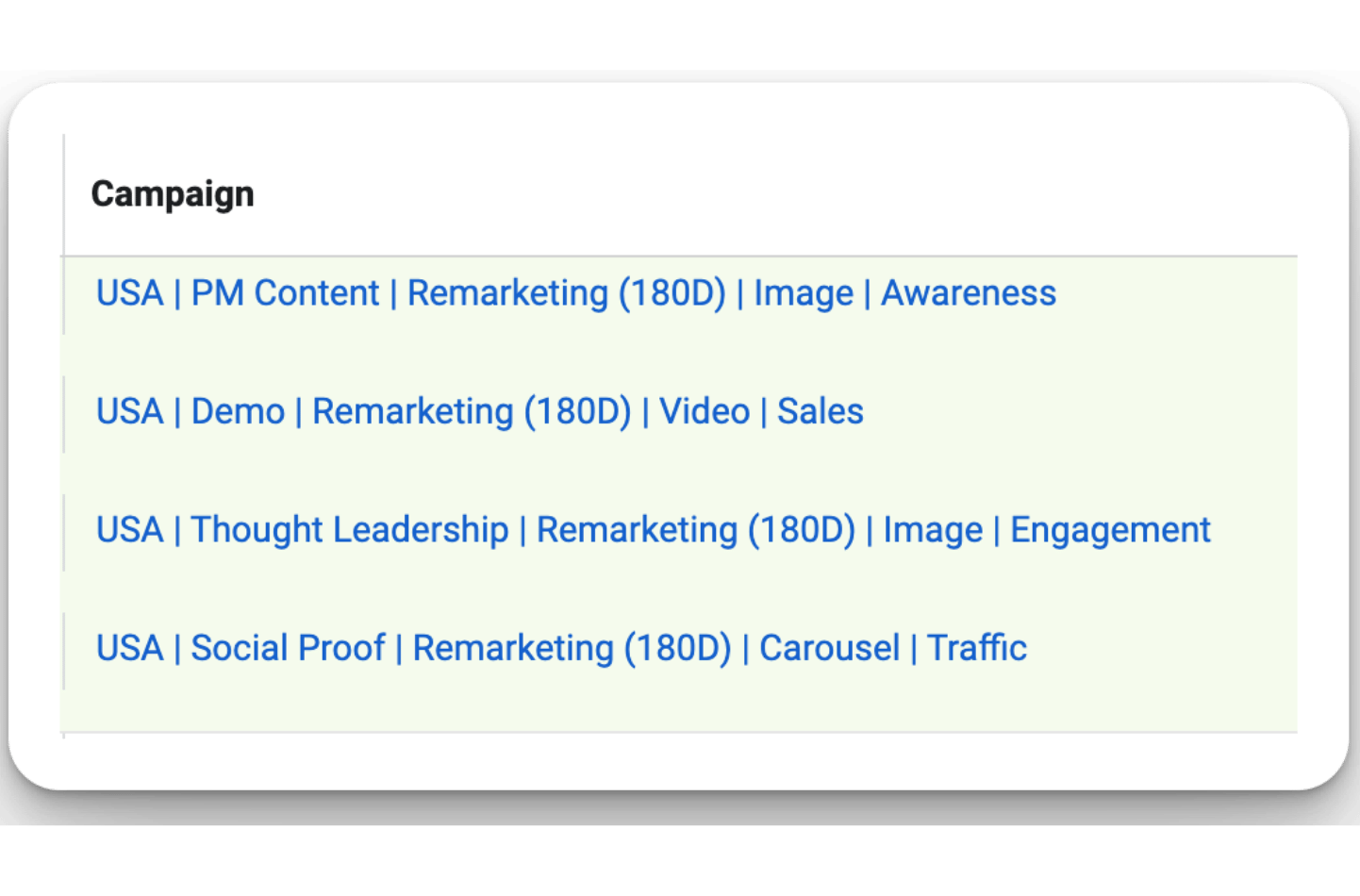
Optional: 30-Day Meta Offer Bouncers Campaign
If you have the audience size available creating an offer bouncer campaign that shows personalized creative to folks who visited your intent pages and didn’t convert is worth testing.
Campaign Name: {Location} | {Offer} | {Offer Name Bouncers} (30D) | {Ad Type} | {Objective}
- EX: USA | Demo | Demo Page Bouncers (30D) | Image | Leads
Recommended Objectives:
- Conversion focus = Leads or Sales
Recommended Daily Budget: $25-$100/day
Recommended Audiences:
- All pricing, demo, trial, and case study bouncers
- All meeting no-shows
Recommended Bid Strategies:
- Conversion focus = Maximize number of conversions or leads
Ads: Offers
.png)
How to Build X (Twitter) Retargeting Campaigns:
With X (Twitter) we don’t have the ability to filter by time frame so we’ll create the following campaigns in the ads manager:
Cohort #1: All Time (Twitter) Retargeting
Campaign Name: {Location} | {Offer} | Remarketing (All Time) | {Ad Type} | {Objective}
- EX: USA | PM Content | Remarketing (All Time) | Image | Reach
- EX: USA | Demo | Remarketing (All Time) | Video | Conversions
- EX: USA | Social Proof | Remarketing (All Time) | Carousel | Engagement
- EX: USA | Thought Leadership | Remarketing (All Time) | Image | Reach
Recommended Objectives:
- Content focus = Reach, Video Views, Engagement, Website Traffic
- Conversion focus = Conversions or Keywords
Recommended Daily Budget: $25-$100/day
Recommended Audiences:
- All website visitors (All Time)
- All 50-100% video viewers (All Time)
- People who saw your tweets (All Time)
- Followers of your X (Twitter) profile (All Time)
Recommended Bid Strategies:
- Content or conversion focus = Autobid
Ads: Product marketing content, social proof, offers (ex: Demo, Trial), thought leadership
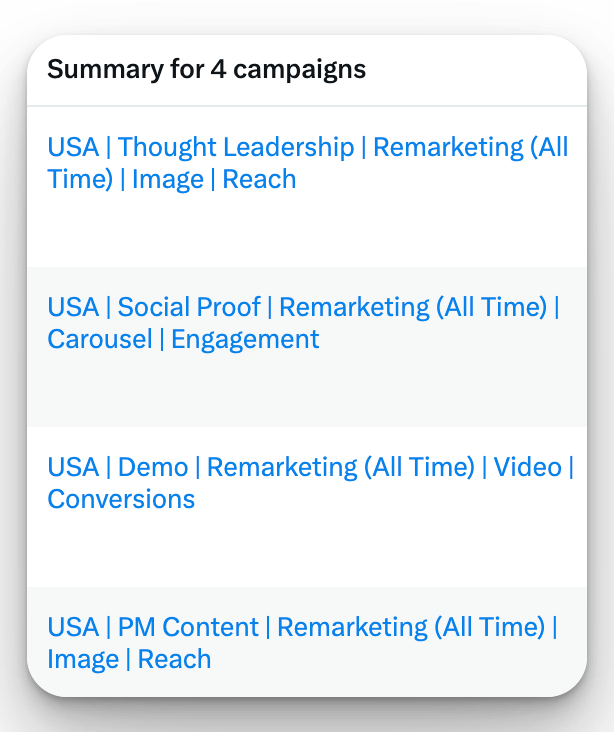
Optional: All Time X (Twitter) Offer Bouncers Campaign
If you have the audience size available creating an offer bouncer campaign that shows personalized creative to folks who visited your intent pages and didn’t convert is worth testing.
Campaign Name: {Location} | {Offer} | {Offer Name Bouncers} (All Time) | {Ad Type} | {Objective}
- EX: USA | Demo | Demo Page Bouncers (All Time) | Image | Conversions
Recommended Objectives:
- Conversion focus = Conversions or Keywords
Recommended Daily Budget: $25-$100/day
Recommended Audiences:
- All pricing, demo, trial, and case study bouncers
- All meeting no-shows
Recommended Bid Strategies:
- Content or conversion focus = Autobid
Ads: Offers
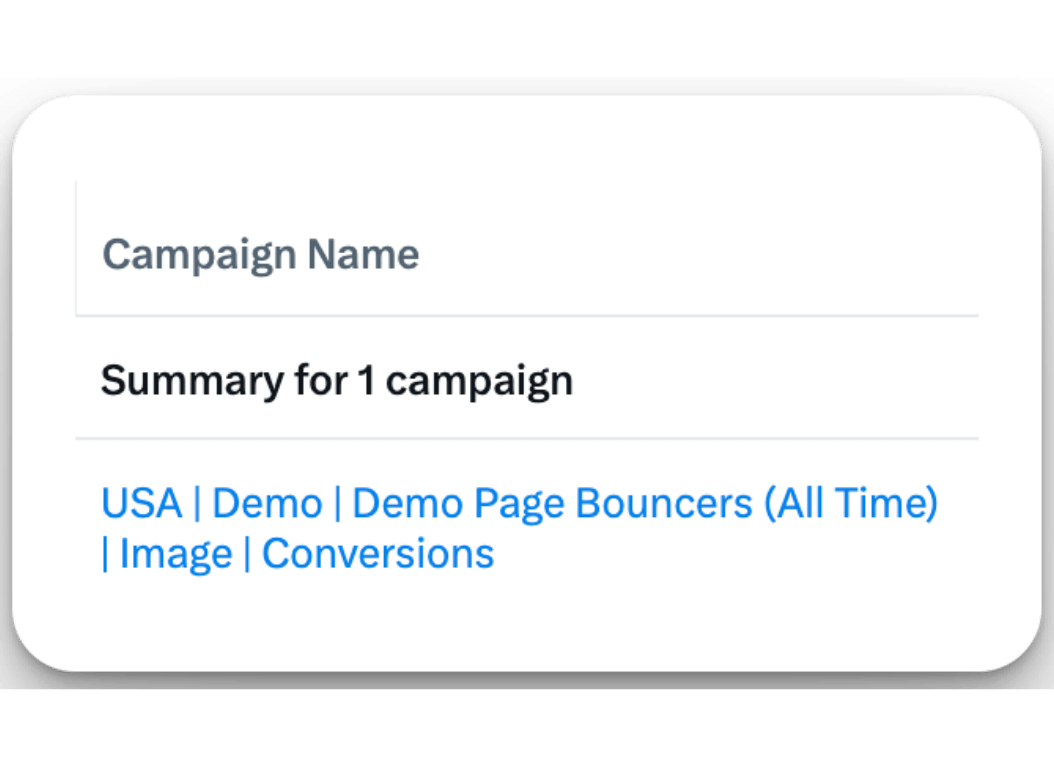
How to Build YouTube Retargeting Campaigns:
Create the following campaigns in the YouTube Ads campaign manager across whichever timeframes are applicable for your account:
Cohort #1: 30-Day YouTube Retargeting
Campaign Name: {Location} | {Offer} | Remarketing (30D) | {Ad Type} | {Objective}
- EX: USA | PM Content | Remarketing (30D) | In-Stream | Views
- EX: USA | Demo | Remarketing (30D) | In-Stream | Conversions
- EX: USA | Social Proof | Remarketing (30D) | In-Stream | Views
Recommended Objectives:
- Content focus = Get views
- Conversion focus = Drive conversions
Recommended Daily Budget: $25-$100/day
Recommended Audiences:
- All website visitors (30D)
- All YouTube video viewers (30D)
- All YouTube subscribers (30D)
Recommended Bid Strategies:
- Content focus = Max CPV
- Conversion focus = Maximize conversions
Ads: Product marketing content, social proof, offers (ex: Demo, Trial)
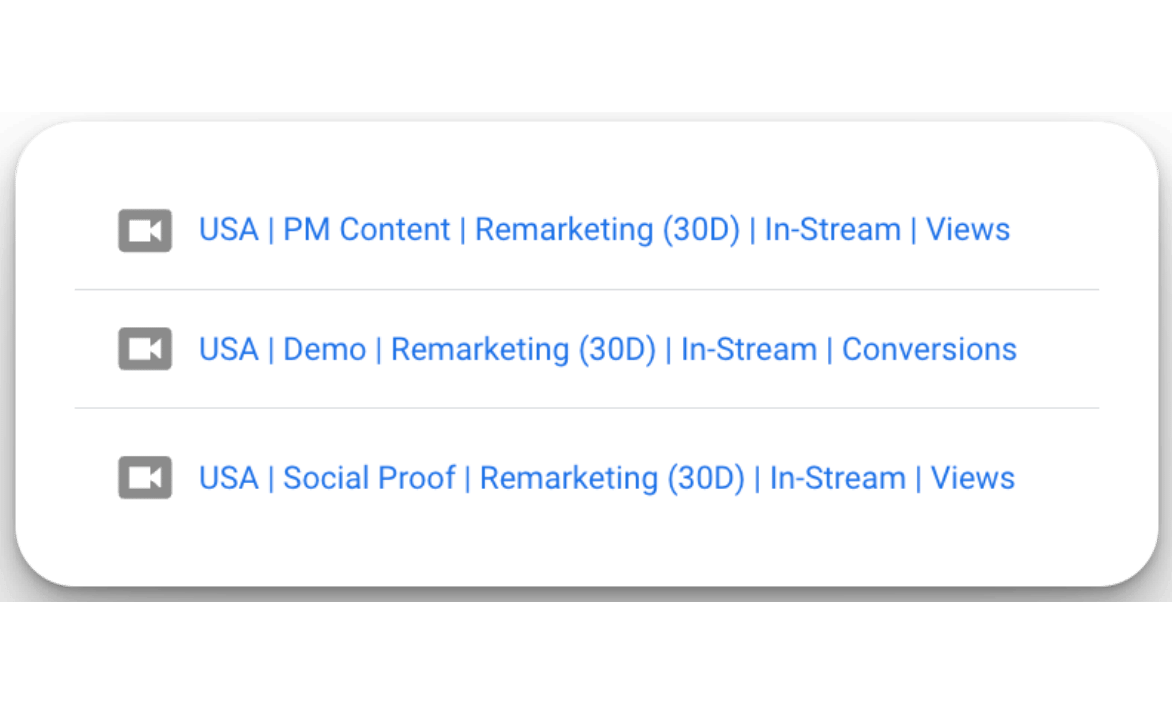
Cohort #2: 90-Day YouTube Retargeting
Campaign Name: {Location} | {Offer} | Remarketing (90D) | {Ad Type} | {Objective}
- EX: USA | PM Content | Remarketing (90D) | In-Stream | Views
- EX: USA | Demo | Remarketing (90D) | In-Stream | Conversions
- EX: USA | Social Proof | Remarketing (90D) | In-Stream | Views
- EX: USA | Thought Leadership | Remarketing (90D) | In-Stream | Views
Recommended Objectives:
- Content focus = Get views
- Conversion focus = Drive conversions
Recommended Daily Budget: $25-$100/day
Recommended Audiences:
- All website visitors (90D)
- All YouTube video viewers (90D)
- All YouTube subscribers (90D)
Recommended Bid Strategies:
- Content focus = Max CPV
- Conversion focus = Maximize conversions
Ads: Product marketing content, social proof, offers (ex: Demo, Trial), thought leadership
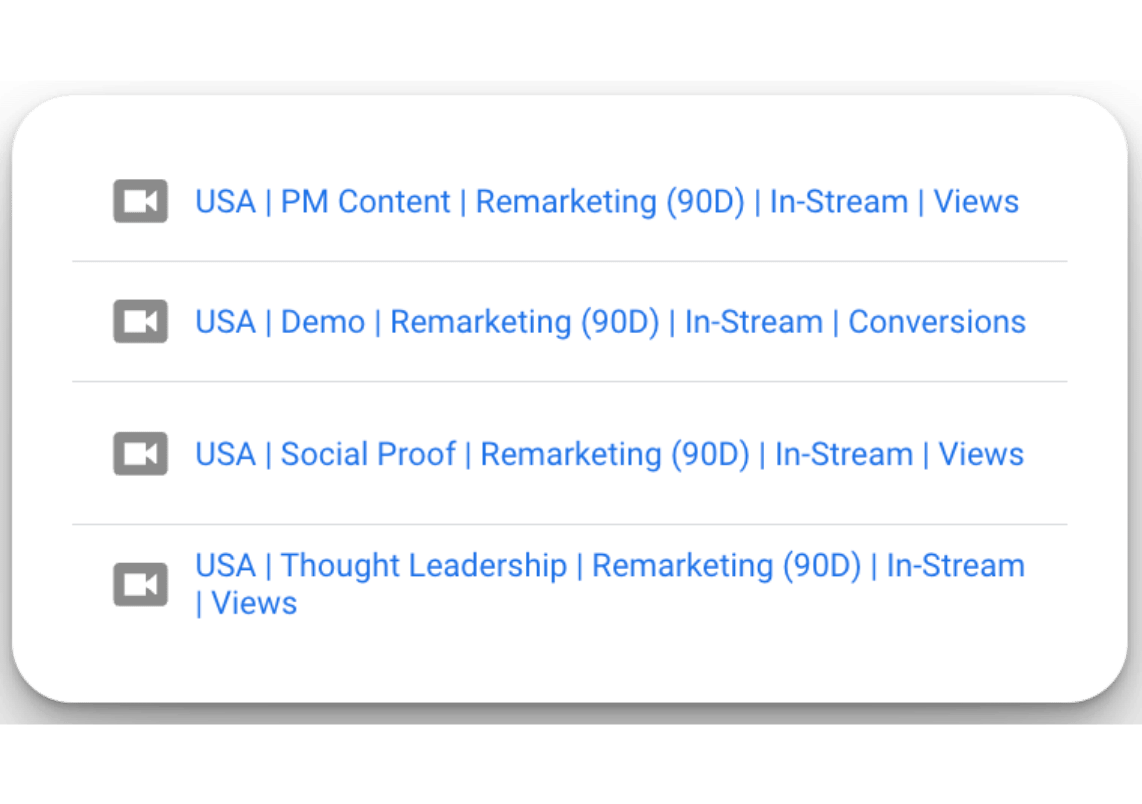
Cohort #3: 180-Day YouTube Retargeting
Campaign Name: {Location} | {Offer} | Remarketing (180D) | {Ad Type} | {Objective}
- EX: USA | PM Content | Remarketing (180D) | In-Stream | Views
- EX: USA | Demo | Remarketing (180D) | In-Stream | Conversions
- EX: USA | Social Proof | Remarketing (180D) | In-Stream | Views
- EX: USA | Thought Leadership | Remarketing (180D) | In-Stream | Views
Recommended Objectives:
- Content focus = Get views
- Conversion focus = Drive conversions
Recommended Daily Budget: $25-$100/day
Recommended Audiences:
- All website visitors (180D)
- All YouTube video viewers (180D)
- All YouTube subscribers (180D)
Recommended Bid Strategies:
- Content focus = Max CPV
- Conversion focus = Maximize conversions
Ads: Product marketing content, social proof, offers (ex: Demo, Trial), thought leadership
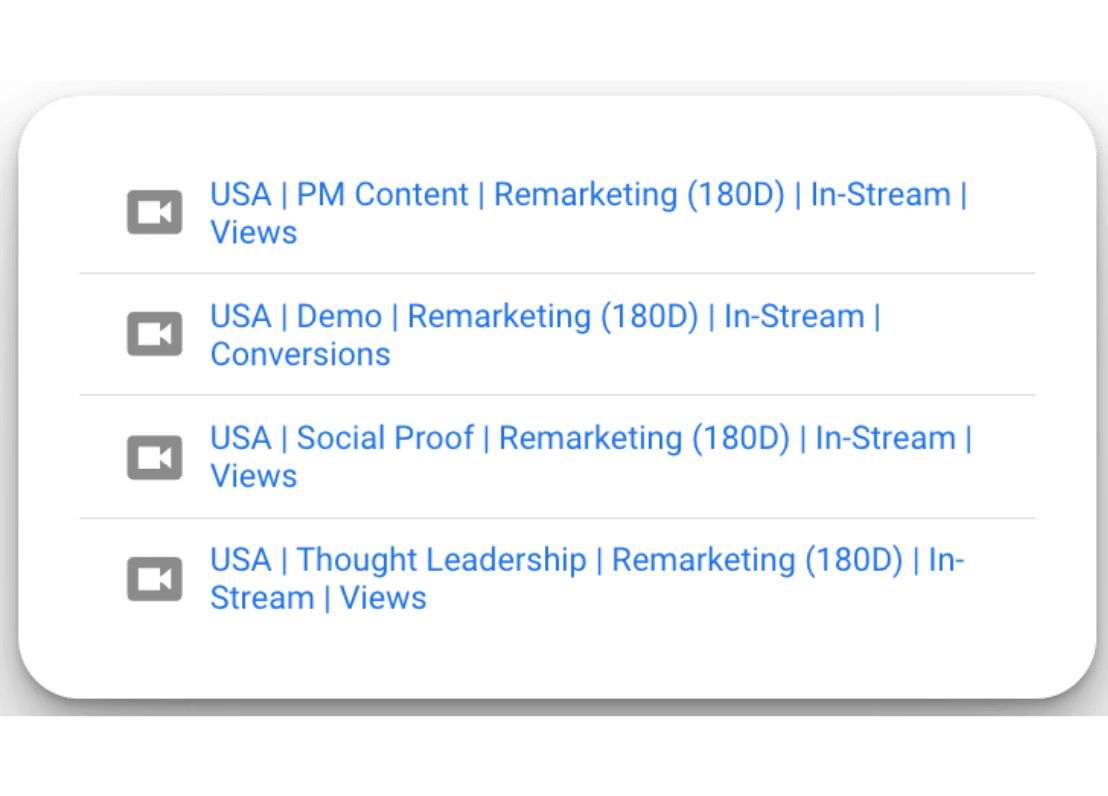
Optional: 30-Day YouTube Offer Bouncers Campaign
If you have the audience size available creating an offer bouncer campaign that shows personalized creative to folks who visited your intent pages and didn’t convert is worth testing.
Campaign Name: {Location} | {Offer} | {Offer Name Bouncers} (30D) | {Ad Type} | {Objective}
- EX: USA | Demo | Demo Page Bouncers (30D) | In-Stream | Conversions
Recommended Objectives:
- Conversion focus = Drive conversions
Recommended Daily Budget: $25-$100/day
Recommended Audiences (layer titles or function if possible):
- All pricing, demo, trial & case study visits
Recommended Bid Strategies:
- Conversion focus = Maximize conversions
Ads: Offers
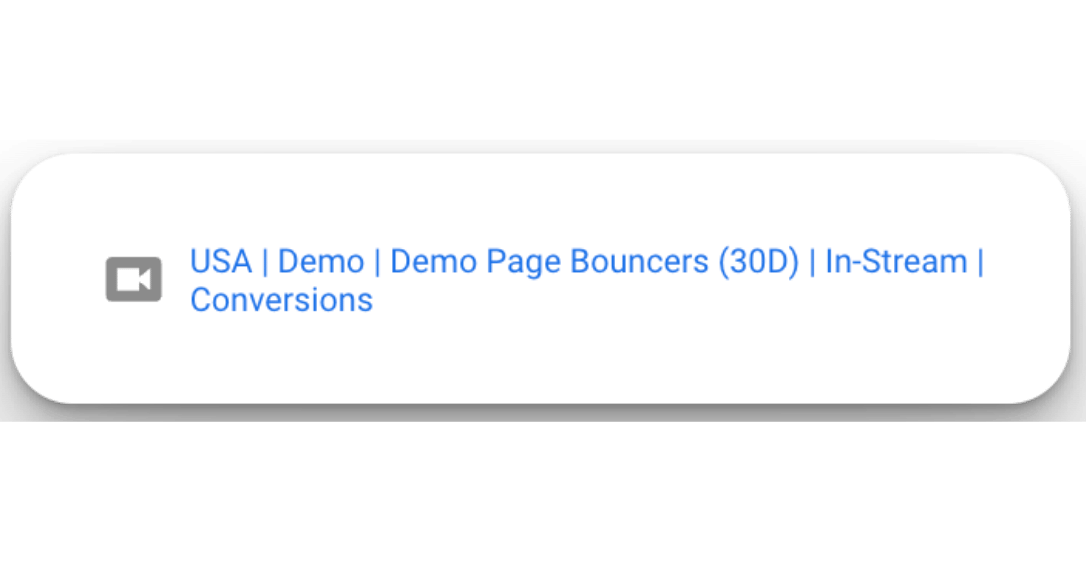
B2B Retargeting FAQ
There’s no shortage of questions around implementing successful retargeting campaigns.
We completely understand the complexity (especially when it’s your first time building them).
Here’s 5 of the most common retargeting questions we hear from clients:
How long does it take to build a retargeting audience?
- 7-30+ days depending on monthly engagement or traffic volumes for the retargeting segment you’re trying to build (ex: website visits, video views, post engagement, etc..)
How many channels should you advertise on?
- Focus on one advertising channel at a time when you have a limited budget (ex: < $3,000/month) master it and then expand to other channels over time.
How do you calculate your starting retargeting budget?
- $25-$100/day is a general rule of thumb you can follow as it’s enough to support the average costs per platform and coverage for small retargeting audiences when starting out.
How does retargeting work?
- Leveraging first party and third party data ad platforms are able to track user behavior in-app and out of platform allowing you to remarket to them based on past behavior.
How often do you need to refresh creatives for retargeting?
- A smaller audience size (ex: < 50,000) typically requires more frequent creative refreshes vs a larger one (ex: > 50,000) to prevent ad fatigue. At minimum you should aim to refresh ad creatives on a monthly basis to stay ahead of ad fatigue.
Launch Checklist
We’ve covered quite a bit in this blueprint!
Here’s a checklist we put together to help you easily reference when launching your retargeting campaigns to make sure you don’t forget anything and avoid common pitfalls.
- LinkedIn Retargeting: Launch Checklist
- Meta Retargeting: Launch Checklist
- X (Twitter) Retargeting: Launch Checklist
- YouTube Retargeting: Launch Checklist
Conclusion & Free Courses
Hope you received a tremendous amount of value from the blueprint! 🎉
If you’re serious about mastering B2B advertising then you definitely need to join 1,000+ B2B marketers leveling up their paid advertising skill sets in AdConversion.
Every one of our on-demand courses are:
✅ 100% free access.
✅ Taught by vetted industry experts.
✅ Have workbooks, resources, and templates.
✅ Less than 10 minutes per lesson.
We believe every marketer should know how to scale paid ads so they can:
• Scale their ideas
• Level up their careers
• Make a positive impact
Click here to join 1,000+ B2B marketers today and start leveling up your advertising skill set.
Takes < 90 seconds to sign up (seriously I timed it 😂)

Become a part of the best B2B Ads community ❤️




%20-%20new%20v2.png)


